|
The fifth annual Record Store Day is almost upon us, and I await it with equal parts excitement and disdain. I’m thrilled that people will descend upon my favorite shopping establishments in droves. I’m happy that some artists and labels have come up with interesting exclusives for the day. I’m particularly excited for the 20% off vinyl discount at Newbury Comics. But for all of the positives, RSD is hardly above reproach. Many of the exclusives are downright lazy, slapping a new sleeve on old songs and writing “limited edition” in all caps on the front. While some of the exclusives are legitimately hard to find (in part because eBay resellers get up earlier than you do), most are still floating around in May. Unfortunately, without any day-of discounts, you’ll have to choke down an inflated price tag for a “limited” run of vinyl that would more than suffice for the majority of indie rock bands. Waiting would, however, allow you some much-needed elbow room for browsing, which is in short supply during the zoo of Record Store Day.
As much as I hate helping out other shoppers on Record Store Day—it’s just not the same experience if you don’t growl “I saw it first” at a timid fifteen-year-old before he keys your car in retribution—I have sifted through the towering list of exclusives to provide you this handy guide.
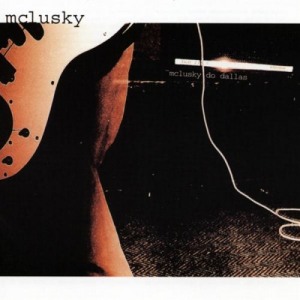
Buy: Mclusky’s Do Dallas LP: If I had a stitch of honor, I’d boycott this release in lieu of singer Andy Falkous’s comment on Twitter that Too Pure hadn’t even mentioned the tenth-anniversary vinyl reissue of Mclusky’s 2002 opus to him, let alone consulted him for a jaded retrospective in the liner notes. An intern at Too Pure likely noticed that the original pressing, out of print for years, goes for $100 on eBay, and nudged their superiors. But I don’t have the moral fiber necessary to make a stand. I missed the boat on Do Dallas when it came out and have spent the past few years shouting along to “To Hell with Good Intentions” and “Day of the Deadringers” to make up for it.
Don’t Buy: The Clash’s London Calling 2012 7”: If you’re searching for the least essential single to purchase on Record Store Day, consider poking Joe Strummer’s corpse with a sharp stick until a cavity opens up to reveal a stack of this wholly unnecessary retread. Boasting a digital remastering job from Mick Jones—who assures me that it will sound better than ever on your analog turntable—on the a-side and an instrumental version on the flip, London Calling 2012 is an unrepentant cash-grab. It may be a test from Epic to see if Clash fans will actually look at what they’re purchasing, so let’s hope literacy triumphs over a misplaced Summer Olympics tie-in.
Buy: St. Vincent’s “Krokodil” b/w “Grot” 7” Wait a second—new songs? On Record Store Day? Annie Clark, you crazy for this one.
Don’t Buy: Jimmy Fallon’s “Tebowie” b/w “Reading Rainbow”: Without the presence of The Lonely Island or Flight of the Conchords, the void of joke-rock novelty vinyl has to be filled by late-night host Jimmy Fallon’s rock star impersonations. Nothing against Fallon’s mimicry of David Bowie or Jim Morrison, but would you want to hear a parody of “Ziggy Stardust” about the Tim Tebow / Peyton Manning saga a year from now? What about two months from now? If you need it to complete your late-night host vinyl collection (joining Conan O’Brien’s 7” and LP), fine, but you’re contractually obligated to buy Craig Ferguson’s forthcoming Teenage Fanclub tribute album.
Buy: Various Artists’ Bring Beer compilation LP: Gerard Cosloy of 12XU is the rare record label owner who recognizes the day’s deficiencies: “While the rest of the nation celebrates Record Store Day 2012 by fighting over White Denim picture discs and Lars Ulrich spoken word albums, let’s spare a thought for the stores that are largely shut out of the party…and in one prominent case, has hosted far superior parties several times a week. Specifically, Austin’s Trailer Space, where proprietor Spot Long hosts countless free, all-ages shows in a decidedly R-rated environment.” While I would gladly purchase a Joel R. L. Phelps flexi disc box set from 12XU on RSD, Bring Beer is a welcome alternative, a compilation of 12XU artists and Austin bands. Here’s the kicker: the proceeds from Bring Beer actually go to Trailer Space, an independent store that isn’t large enough (Reckless, Amoeba, Newbury Comics) to qualify for many of the exclusives I’ve mentioned. If you don’t find Bring Beer at your local store, you can order it from 12XU along with a warehouse find copy of Phelps’s superlative Blackbird.

Don’t Buy: Pelican’s Australasia: The description for this release says “available [on vinyl] for the first time on Hydra Head since the album‘s 2003 release,” which isn’t remotely true. Not only did Hydra Head milk Australasia for four different pressings in 2004, Interloper followed it up with three more in 2006 and 2008 and Viva Hate included it in their Wooden Box collection in 2010. Play & Record highlighted one of those Interloper pressings in a recent post, and I’d rather have that one than this straight reissue (if I didn’t already own a Hydra Head original). Unless you’ve somehow managed not to score a copy of the record since it came out, pass on completing the set. Given the pressing history of Australasia, you need to stop the bleeding before Hydra Head drains your savings account.
Buy Unrest’s Perfect Teeth 7” box set: Included on the list of Record Store Day exclusives despite being available for pre-order from TeenBeat, this reissue of Unrest’s 1993 classic is worth picking up in either avenue. Finding common ground between the energetic pop of “Cath Carroll” and “Make Out Club” and the down-tempo meditations of “Breather XOXO” and “Angel I’ll Walk You Home,” Perfect Teeth is a precise achievement. This reissue is equally impressive: six seven-inch singles (five on colored vinyl) and a 24-page booklet in an Independent Project Press box. Sadly, unlike the similarly minded Bizarre Ride II The Pharcyde singles box set, Perfect Teeth won’t say, “Oh, shit!” when you open it.
Don’t Buy: Red Hot Chili Peppers’ Stadium Arcadium: The greatest joke of them all? “On April 14, 2012, the Red Hot Chili Peppers will be inducted into the Rock & Roll Hall of Fame, and to commemorate this historic event, this classic deluxe box set of the band’s first number one album will be specially priced for Record Store Day.” Let me translate that press-gasm: “Record stores are tired of having this behemoth of a box set sit on their shelves, so we’ve allowed them to mark it down enough that someone might actually buy it, even though it’s not Blood Sugar Sex Magic or Californication. But it’s not just a regular markdown, it’s for Record Store Day. Please buy it. Please?” They should have just quoted Rolling Stone’s review of Stadium Arcadium, which anointed it the group’s most ambitious album (and later the second-best album of 2006 behind Bob Dylan, if you can believe it): “The guy [Kiedis] who once yelped, ‘I want to party on your pussy!’ whisper-sings a gentler, though not unrelated, proposition: ‘All I want is for you to be happy/And take this moment to make you my family.’” Why yes, Anthony, it truly does sound like you’ve maintained your edge 23 years into your career. Let me waste shelf space on that sentiment.
Buy: Mastodon’s split singles with The Flaming Lips and Feist: The reward of Mastodon covering the former’s “A Spoonful Weighs a Ton” and the latter’s “Commotion” (and Feist returning the favor on Mastodon’s “Black Tongue”) will not be worth the $16 to $20 you’ll have to pony up, but think about the long-term investment. Next year Mastodon has split singles with Sharon Van Etten and Mercury Rev. The year after it’s a split LP with Godspeed You Black Emperor. The year after it’s a cassingle box set with Fine Young Cannibals. 2016 they forgo the one-off approach and use Record Store Day to welcome Nicky Minaj and Will Oldham to the group full-time.
Don’t Buy: Genesis’s Spot the Pigeon LP: In case you think every RSD exclusive is aimed at modern rock enthusiasts dabbling in the vinyl format (the people you’ll hear gasp “Whoa check out this copy of Dark Side of the Moon”) or Stereogum-reading hipsters aching for Animal Collective exclusives, every year you’ll find a few items like this reissue of an obscure 1977 Genesis EP aimed at the baby boomers who kept their vinyl collection instead of donating it to Goodwill or gifting it to their kids. Credit where credit’s due: Spot the Pigeon is legitimately hard to find, so this reissue is a greater service to fans than an audiophile pressing of Invisible Touch would be. The last release to feature guitarist Steve Hackett, Spot the Pigeon offers three Wind & Wuthering outtakes, including Hackett’s dexterous “Inside and Out.” None of that makes Spot the Pigeon a crime like London Calling 2012, but here’s why you don’t buy it: Unless you’re a prog-rock obsessive, you’re better off sifting through dollar bins for Genesis’s ’70s output, which you can acquire in total for less than the price of this reissue, than grabbing a copy of this away from someone’s dad. What else does he have to look forward to? Grandkids?
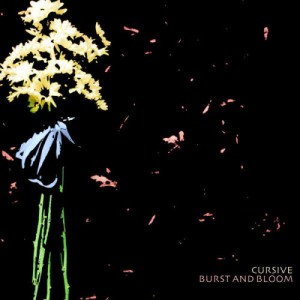
Buy: Cursive’s Burst and Bloom LP: Spinning Cursive’s newest LP, I Am Gemini, made me yearn for their solid run of Domestica/Burst and Bloom/The Ugly Organ. Saddle Creek must have heard my thoughts, since they’ve repressed this 2001 EP on colored vinyl. Marking the debut of cellist Gretta Cohn and the emergence of Tim Kasher’s meta-awareness (which spiraled into self-parody after The Ugly Organ), Burst and Bloom holds up as well-constructed turn-of-the-millennium indie rock / emo, especially post-intro “Sink to the Beat” and “Tall Tales, Telltales.”
Don’t Buy: Minus the Bear’s “Your Private Sky” b/w “South Side Life”: Given the recent reissues of Minus the Bear’s first two releases (This Is What I Know About Being Gigantic EP and Highly Refined Pirates LP), your money would be better spent remembering those salad days, not collecting the scraps from the group’s 2010 nadir Omni. These songs were initially released as iTunes bonus tracks, and “Your Private Sky” could have made Omni based on quality, but again, that album stinks.
Buy: Music not associated with Record Store Day: Lost in this deluge of largely inessential exclusives are albums you should buy because you will enjoy them, not because you feel a completist duty to a favorite artist, suspect you can fetch three times the asking price on eBay, or want to cause personal pain to the shopper behind you. Go into your favorite store, ignore the swarms surrounding the above releases, and flip through the racks for records you actually want. Perhaps you’ve enjoyed Sharon Van Etten’s Tramp, The Twilight Sad’s No One Can Ever Know, or The Life and Times’ No One Loves You Like I Do this year but haven’t grabbed them yet. Maybe you just read Michael Azerrad’s Our Band Could Be Your Life and have some SST and Dischord classics on your list. Who knows, you’ll recognize an album a friend recommended you a few years back and buy it on a whim. These exclusives get people into record stores on April 21, but stopping with them would be a huge mistake.
|
|
Part of the problem with my Record Collection Reconciliation posts to date is that I haven’t been upfront about the origins of these albums. 35 of the first 60 entries came from the same place and cost the same amount: $1. By my count, I own 332 total LPs from this place, all purchased for a buck, many of which are not typically found in dollar bins. I withheld this location from anyone I did not know personally for a very simple reason: competition. There was more than enough of that already.
Now that the magical well of cheap vinyl has long since dried out, I’ll reveal the secret: All of these records came from the Got Books Charity Book Warehouse in North Reading, MA, over the span of roughly two years. My first visit was in the summer of 2006, when my wife found a listing for a used book sale in the free weekly paper. I didn’t know they’d have records and the vinyl they did have on that first visit was forgettable enough not to mention. I did, however, grab a handful of interesting books, including a sixth-printing hardcover copy of Albert Camus’s The Plague with a badass embossed grim reaper on the cover. That kept me going back.
I might not have known about the sundries at stake if not for one of the warehouse’s employees, who casually informed me that you had to get there at opening Friday morning to get the fresh stock of vinyl. (Said employee later had to quit the job because of the high level of dust in the warehouse—I fortunately have shown no lasting effects.) The following week I arrived at 9am and saw a line of collectors/dealers, book and record alike. Once the door opened, they rushed to the vinyl racks in the side of the warehouse, weaving through the aisles of books. It was a swarm of balding locusts.
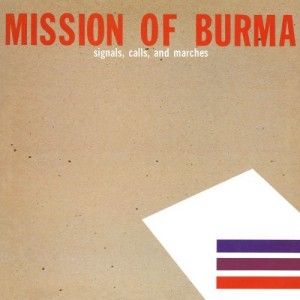
Let me temper your expectations, as mine were tempered again and again. All of the stock came in via donations, so the quality varied wildly based on the taste of people who’d donated, much like any Goodwill/Salvation Army/yard sale/thrift store you’ve ever visited, except on a much larger scale. Some weeks I’d find a cache of early ’70s jazz fusion, other weeks it might be Eno solo albums, but most people donated Barbara Streisand, John Denver, James Taylor, Ferrante & Teicher, and so forth. The week that truly hooked me was one of the first that I arrived early and found a pile of punk/post-punk classics: The Buzzcocks’ Singles Going Steady, Mission of Burma’s Signals Calls & Marches EP (original), the first three Gang of Four albums, Public Image Limited’s Second Edition, a few others. If not for competition from the bane of my existence (more on him shortly), I would’ve grabbed MOB’s Vs., too. It was a constant battle between hoping for specific records to show up and the reality of which ones always showed up, but trips like that one justified the commitment.
Yet I was never the only person scrounging for these records, so what I found often took second-place to what I saw other people grab.
The Competition
I love shopping for records, but I’d never thought of it as a competitive sport. If I had any hopes of grabbing the best stuff, I had to sharpen my game. I had to get to open racks first. I had to choose my first rack carefully, since it might the only one I’d have first dibs on. Unless I saw a great title at the front of a rack, I’d go for the one with the most colors on the top of the sleeves, since that indicated fewer dusty classical LPs and the potential for more recent fare. As I flipped through my rack as fast as possible, I had to keep my peripheral vision on the surrounding racks: What’s my next target? What’s the stock like today? What just got pulled? I had to memorize which racks I’d flipped through so that I got through all of the stock as quickly as possible. I learned to pull absolutely everything of interest and make the final decision at the end. There was no time to marvel at a find or linger on a potential winner. Grab everything as fast as you can.
The most important part of this game was knowing my opponents. The majority of them were local dealers, making their livelihood off their finds. By contrast, I was a graduate student trying to get a record fix on meager spending cash and build my collection. I grew to know my competitors a bit more each week, since they would talk shop waiting in line and compare finds after the fact. Here are the major players:
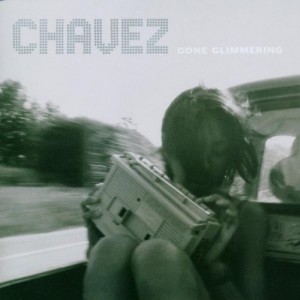
- The Bane: Three things gave the Bane his title. First, he was at the front of the line every week. I can only remember one week when he wasn’t there, and everyone else talked about his absence, especially his two book-dealer friends. I’d try to get there earlier than him, but it rarely worked. Second, he had some preternatural ability to find the records that most interested me and snag them first: Chavez’s Gone Glimmering, Wire’s A Bell Is a Cup…, Fugazi’s Repeater (although I found the inner sleeve, and in a decision born from vindictive angst, held onto it until he left). Third, I found his eBay store after he grabbed that copy of Mission of Burma’s Vs., and I’d check in on what he found and what it went for. This was the record-shopping equivalent of checking in on your ex-girlfriend on Facebook. Nothing good would come of it, but I’d do it anyway. Like a few of the other competitors, the Bane earned my begrudging respect and teeth-grinding hatred. He sped through the racks and only grabbed good stuff.
- The Couple: My second biggest competition was technically two people, since a young, 30-ish dealer brought his girlfriend most weeks. He was primarily interested in jazz LPs and hip-hop twelve-inches, but since he was a dealer, he’d grab anything else of interest / value. It’s likely ageist of me, but I found myself more concerned that younger dealers would recognize the merit of some late '70s or early '80s underground record than their older counterparts. The most frustrating score I witnessed was the girlfriend grabbing an original bound copy of Joy Division’s Still, thinking about it for a second, and putting it in her basket. When I ran into them selling records at the Somerville Rock 'n' Roll Yard Sale in the fall of 2008, I bought a reasonably priced copy of Eric Dolphy’s Out to Lunch, having a strong sense of his profit margin on it. He mentioned that he recognized me from somewhere, and had a laugh when I explained where.
- The Bottomless Pit: No, not Andy Cohen or Tim Midgett. This older dealer pulled absolutely everything out of the racks. If he had the slightly inkling of a record’s value or interest, it went into his heaping basket(s). You could tell if someone was new to the warehouse because they’d see a basket filled with good records, start flipping through them, and then hear the (potential) owner insist “Hello, those are mine.” He was a good spirit about it, which made sense considering his Grateful Dead obsession, but eventually he learned to put a jacket over the basket. Between his thin build, glasses, and hairstyle (balding, white hair but with a ponytail), he could have emerged from any number of local used record shops. Yet the drifter in him dominated; he’d relate stories of how many local Goodwill stores he’d hit up in the previous week. He would have been a stronger competitor if not for the toll that his genial interest had on his speed—he often stopped midway through a rack and pick up a conversation with a fellow dealer about some semi-obscure '60s rock record he just found.
- The Autograph Chaser: The other dealers were interested in records for their value as records, but the Autograph Chaser always looked a step ahead. He was mostly interested in classic rock and novelty records, since he could bring those to casino shows and book signings and presumably rake in the dough. My favorite overheard story was his absolute frustration with Stephen King, who had a reading in Harvard Square but refused to sign any books other than his newest. The Autograph Chaser waited around after the signing to follow King back to his hotel, but the inconsiderate author refused to sign any additional books. That Stephen King, what a dick!
- The Kid: He was one of the last regulars to show up during my time, a college-age kid from Lowell who loved ’70s classic rock. He was chummy with the other regulars, who were more than happy to pass along a worn Queen LP to him. He did have a streak as a dealer-in-training, relating how he bought a few hundred LPs from the backroom of a Lowell store in the hopes of flipping the valuable titles. He also had that Beatles completist streak that comes with every dealer—oh, the conversations they’d have if some remotely hard-to-find Beatles album came up.
- The Stereo Jack's guy: I didn’t recognize him at first, but soon overheard that one of the employees of Stereo Jack’s Records in Cambridge was a weekly visitor to the warehouse. It was strange knowing specifically where the records would show up, but as it turned out with the Bane and the Couple, this situation was not unique. (Sad news update: Stereo Jack’s will close in April.)
These were the most memorable people going to the warehouse every Friday, but I need to stress the gradual increase of attendees. When I started going in the mornings, I could get there at 8:50am and get a good-enough spot in line to snag an open rack. Over the course of the roughly two years I had to roll that back to 8:15am as the line grew from 15 to 50 people. Not all of them were there for the records—there were plenty of retirees stocking up on VHS tapes, book-dealers scouring the shelves for first editions, and even some people cross-checking every book with a bar-code scanner to find valuable titles for resale (I viewed this as cheating, but have since come around to the indispensable value of a smartphone while record shopping). It was like going from the minors to the pros.
The Finds
As I mentioned before, all of this would not have been worth it if not for the occasional gem. As bitterly as I look back upon my defeats, I can flip through my record collection and recall some victories. These may not be the rarest titles I found, but the stories behind them loom the largest.
- The match: I hated seeing someone else grab a wanted record, but the single most infuriating experience at the warehouse was coming across an empty sleeve. For some reason, this happened time and time again with Tom Waits albums. I’d find the sleeve for Swordfishtrombones, pick it up excitedly, and sigh at the missing weight of the vinyl (keep in mind this was before it was reissued). I’d put it in the basket on the off-chance that I’d find the vinyl in a white inner sleeve somewhere else in the racks, but that almost never happened. The exception was for The Smiths’ Strangeways Here We Come, my favorite of their full-lengths. I came across the sleeve (bearing a $4.50 price tag from Mystery Train), then frantically flipped through the racks until I stumbled upon the printed inner sleeve containing the record. I would’ve high-fived someone if I could have.
- The local cache: I’ve already mentioned how finding Mission of Burma’s Signals Calls and Marches EP was the first sign that this place was a keeper, but it wasn’t the last time I’d encounter one of Roger Miller’s projects. One week I grabbed two later Mission of Burma releases (Let There Be Burma and the self-titled EP), two No Man LPs, and a Birdsongs of the Mesozoic LP. Admittedly, most Boston-area used record stores are flooded with No Man vinyl, but at the time I felt thrilled to revisit that well.
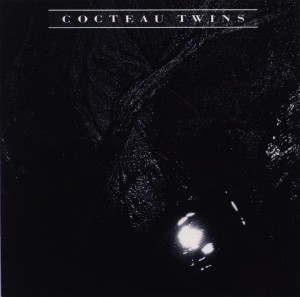
- The seed: This entry could have been about any number of artists, since the warehouse filled in major, blinding gaps from the 50s, 60s, 70s, and 80s in my record collection. (A short list: Ornette Coleman, Herbie Hancock, The Replacements, The Rolling Stones, Minor Threat, David Bowie, Meat Puppets, Prince, XTC.) Yet one looms larger as a seed for future purchases. On a week when I found little, if anything else, nabbing the Cocteau Twins’ The Pink Opaque and Tiny Dynamite / Echoes on a Shallow Bay was a gateway drug to the group’s expansive discography. I never found another Cocteau Twins LP at the warehouse, no matter how much I’d hoped to stumble upon Heaven or Las Vegas, but it solidified my curiosity in the group after placing Treasure on my iPod Chicanery playlist.
- The snow haul: My dedication to the warehouse was always a bit stupid, but never more so than a trip up during a snowstorm. I justified it with “I’m driving against the flow of traffic” and left early to compensate, but still felt the clock rushing faster than the stop-and-go traffic. By the time I reached the warehouse, the doors had opened and the vultures had descended upon a particularly heavy load of records. I bolted to the back and sped through the vinyl as fast as I could, hitting pockets of interesting albums like four of Brian Eno’s first five solo releases and the first two Fugazi records. My final haul argued that the ends justified the means, but now I imagine what I would’ve been like if I only encountered Herb Alpert & the Tijuana Brass that day.
- The ’90s day: It took me a while to accept this fact, given my never-ending optimism that the zebra adorning Hum’s You’d Prefer an Astronaut would greet my from the middle of a rack and I’d hug the record and then chest-bump the nearby dealers, but vinyl was a niche product by 1989, let alone 1995. Cassettes and CDs had usurped the market share during the 1980s. This meant two things for post-1989 vinyl: first, there’s significantly less of it around; second, people who bought it were more likely to hold onto it. (The exception? DJs. They’d dump crates-full of black-sleeved hip-hop and dance singles once that movement had passed or their interest had waned.) Finding any rock record from the 1990s was a rarity. I only came away with one qualifying record from what I remember as ’90s day (Helium’s The Dirt of Luck, a favorite I’d owned on CD for years), since the Bane got that Chavez LP and the Couple nabbed Jon Spencer Blues Explosion’s Orange, but seeing all of those Matador titles was a tick of unfounded hope that I might encounter them again.
- The return: The feeding frenzy usually only lasted 15 minutes, by which point I’d seen all of the racks and was contemplating going through them a second time. I couldn’t narrow down my spoils (a process which seems ridiculous in hindsight—these are dollar records—but made sense at the time, since I often only had $10 in my wallet) at this point, though, since my decisions depended on seeing the results of the same process from my competitors. They rarely put anything good back, meaning that a slightly worn copy of some classic rock record might be the only addition to my pile. The exception was when someone—I want to say the Bane—put back an original copy of Dinosaur Jr.’s self-titled debut, back when they were just straight Dinosaur. I suspect that the name change might have thrown the original finder off the scent, but whatever the reason, I was thrilled it happened. (Of course, I would’ve been more ecstatic to grab a copy of You’re Living All Over Me or Bug, but I grabbed those on reissue later.)
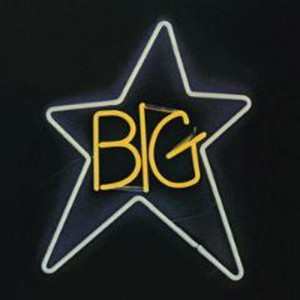
- The rarities: I fully recognize that many of my picks are not particularly rare or valuable, but I knew immediately when I found two that were. Sometime during the spring of 2008, when the warehouse was blowing out its inventory, I found original pressings of the first two Big Star albums sitting near the front of a rack. I’ve been tempted to sell them ever since, especially after they were reissued, but I can’t bring myself to do it.
These are the exceptional stories, but most weeks it was a grind: flip through every record, find one of genuine interest and a few titles of relative interest, check out and drive home. Sometimes the records would all be leftovers and I’d come home with a few hardcover copies of Ernest Hemingway novels. Sometimes I’d convince myself to get a classic rock staple so I wouldn’t go home empty-handed. Every now and then there would be a huge week in which I’d bring home 20 records and realize that I’d eventually need to start a meme to get through all of them.
The Demise
I’ve mentioned that all of these records came from charitable donations, but what I’ve glossed over is Got Books’ business model. If you Google “Got Books,” the first auto-fill suggestion is “Got Books scam.” They’re a “for-profit professional fundraiser,” meaning that some of their proceeds go to help non-profit organizations. If you’re expecting all of the proceeds from these sales to go to charity—which you might, since Got Books’ omnipresent donation bins tout “books for charity”—you’ll be frustrated by the percentage that actually does. They do help worthy organizations, but I’ve never doubted for a second that they’re raking in money, especially when you compare what they looked like then with what they look like now.
Got Books’ inevitable expansion crippled the warehouse sale. After a few months of warnings and inventory clear-out (which I’ll close with), they moved from the North Reading location up to a larger building in Lawrence in June, 2008. The new building had a cleaner front-end—which felt like a store, not a warehouse—and more space to sort the truckloads of incoming books, videos, and records. Faced with a longer drive, increasingly spotty stock, and the advent of actual employment, I weaned myself off of my weekly visits.
Got Books also weaned themselves off of the free-for-all warehouse sales. In a series of changes reminiscent of Animal Farm, they recognized the potential for greater profit. Valuable books went up on Half.com. The warehouse store was replaced by a growing number of Used Book Superstores, in which varied (yet still cheap) pricing replaced the old dollar standard: typically $2 for a paperback, $3 for a hardcover. The records were split up between two of these locations (Salem, NH, and Danvers, MA) and given a confounding, color-coded system of pricing: something like $3 the first few days after new stock arrives, $2 the rest of that week, $1 or under after that point. This system penalizes the dealers to some extent, but if something’s actually rare, they’re still going to buy it. For me, rushing out to Danvers on a Thursday morning is neither feasible nor justifiable nowadays.
The Last Hurrah

The fall of Rome sounds like a singular event, but actually took place over hundreds of years. Similarly, although on a much smaller scale, the warehouse’s last hurrah lasted from the winter of 2007-08 into the spring. The available stock gradually increased with more racks, wall shelves, and boxes on the ground. But in some unknown, likely reformatted corner of my laptop hard drive, there’s a grainy cell phone camera picture that perfectly captures its tipping point. They’d opened up the massive curtains which separated the sale area from the sorting area, exposing enormous boxes (5’ by 5’ by 5’) of unsorted vinyl. I’d start by excavating one corner of the box, then hopped over the thick cardboard wall into the box and sorted through its contents. There wasn’t much dignity to the old method, but this arrangement felt like dumpster diving. And somewhere, there’s a photo of middle-aged dealers doing the same thing.
The problem was that the increase in volume didn’t guarantee miraculous finds, OG Big Star vinyl excluded. I remember pulling a few worthy records out of those enormous boxes—XTC’s Skylarking, Raekwon and Run-DMC twelve-inches—and otherwise being astonished by how much crap could be piled up. Prior to those trips, I’m sure I dreamed of swimming through endless dollar bins, finding exactly what I wanted, narrowly beating competitors to major scores, not seeing a single copy of James Taylor’s Flag. After them I likely had nightmares of being buried alive in tombs of Neil Diamond vinyl.
Perspective
There are other competitive forms of record shopping—the masses descending upon the record tents at the Pitchfork festival, local events like the Somerville Rock 'n' Roll Yard Sale—but nothing matches the consistent inconsistency of the Got Books Charity Warehouse. I still have a rush when I find some sought-after title at a record store, but I have to look at the price tag. I have to make a decision based upon that information. At the warehouse, if I saw Ornette Coleman’s Free Jazz, I had essentially purchased Ornette Coleman’s Free Jazz. If I found twenty great records, I could come home with twenty great records without spending $150.
I’ve reiterated again and again the amount of standard dollar-bin fare that I encountered at the warehouse to underscore the sense that this was some mystical source of exclusively awesome records. It took the issues of every record store—varying quality of stock dependent upon recent acquisitions, other shoppers, location, and rate of turnover—and exploded them. Unless you live near Amoeba in San Francisco, it’s unwise to hit any record store too often for anything other than the just-in bin. You’re going to see the same sleeves. That was the beauty of the warehouse—I could go every week, see different shitty sleeves, and maintain a realistic hope that someone who had good taste back in 1982 cleaned out their garage.
|
56. Dr. Billy James Hargis - The United Nations Hoax - Key Records, 1962
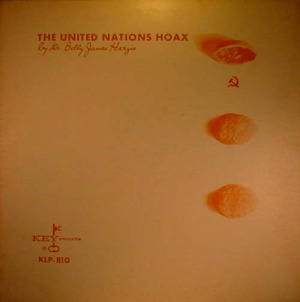
Why I Bought It: There’s really no doubt as to what will be on this LP—anti-communist rhetoric, check—and the cover is vague enough to be foreboding, so there goes a dollar. I didn’t know who Dr. Billy James Hargis was when I bought it, but it’s hardly a surprise that “the world’s leading anti-communist evangelist” was also one of the founders of the Religious Right. If nothing else, this record could be filed away with a number of other “Party’s over, folks, let’s get out of here” curiosities.
Verdict: This “fact-packed album” (thanks, Matt Cvetic, former FBI counterspy and liner-note scribe) is just as infuriating as I expected. Hargis, as paraphrased so effectively by Cvetic, argues that the United Nations is a “Soviet-controlled predatory monster—housed, clothed, and fed by those it plans to consume... the American people!” This alarmism isn’t backed up by anything other than basic facts about the constituency of the United Nations at the time, so he’s not rolling out evidence of damning policy change. I’m tempted to type out the liner notes, since they’re loaded with overblown rhetoric, but I’m sure you get the drift. I admittedly only listened to one side of this LP, which is against my usual “suffer through all of it” policy, but it’s not like Hargis is likely to save his hottest tracks for the flip.
I’m sure this issue will come up again with a few more novelty LPs, but political rantings like The United Nations Hoax no longer garner vinyl pressings thanks to the rise of television (FoxNews), the internet, and specifically podcasts. It would be rather amusing if Keith Olbermann took advantage of the recent resurgence in vinyl (and the liberal leaning I presume accompanies it) by releasing a gatefold pressing of his special comments. Maybe Ben Affleck could write the liner notes.
57. New Wet Kojak - Extended Tongue and Miramax - Akashic, 1997
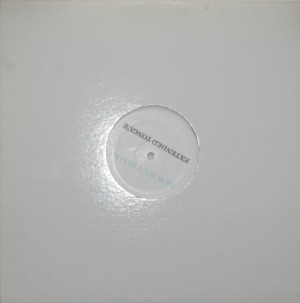
Why I Bought It: My rabid Girls Against Boys fandom was coming to a fever pitch around the time of New Wet Kojak’s second LP, 1997’s Nasty International. The Touch and Go catalog called it “4:00 am basement lounge,” which is an astonishingly accurate assessment of the music’s creation and its designated listening environment. Subtract GVSB’s rhythmic drive, add some skronking horns, turn Scott McCloud’s vocals down to backroom whispers, and you have a New Wet Kojak song. It’s a self-indulgent mess, but hey, it’s a side project.
Their self-titled debut was decidedly half-baked, but Nasty International felt almost like a real album, if not a particularly memorable one. Switching between leering, mid-tempo rock songs and slow-grind ballads, Scott McCloud and Johnny Temple found a new formula to exploit. Following GVSB’s disappointing major label debut, the grossly over-produced Freak*on*ica, New Wet Kojak’s next album, 2000’s Do Things, perfected McCloud’s late-night come-ons and sloganeering. Sometimes it sounded great (4:00 am), sometimes I was embarrassed to listen to it (daytime), sometimes lines like “Don’t miss sexy fun! Do things!” became ironic catch phrases during road trips, but it felt like a real band. Too much like a real band, in fact.
By this point, Girls Against Boys was frustrated by the aftermath of their Geffen deal and slowing down their pace. They did a few soundtracks (the New Order-esque “One Dose of Truth” from the Series 7 OST being the overwhelming highlight) and came back to the independent life with 2002’s Jade Tree outing You Can’t Fight What You Can’t See, a nice return to formula, but the writing was on the wall. Underlining that writing was how professional New Wet Kojak’s next two releases sounded, the 2001 No. 4 EP and the 2003 This Is the Glamorous LP. No longer did the group evoke “4:00 am basement lounge.” It was a strange, unbecoming evolution, since the more New Wet Kojak tried to rock, the more I longed for GVSB.
GVSB’s been on permanent hiatus since 2003, coming out of hiding only to perform a few key gigs. New Wet Kojak must’ve suffered the same fate shortly thereafter, but I simply never cared enough to note their demise.
This particular LP is a fine document of that malaise. A limited edition 12” with extended cuts of two New Wet Kojak songs should be marked directly to a GVSB fanboy like myself, but I waited until Reckless marked it down to a few bucks before grabbing it. By that point, New Wet Kojak had gone professional and I’d stopped listening to their earlier records, so this LP was filed away with my other completionist urges.
Verdict: I should have been wary of the word “extended” in the loose world of New Wet Kojak. “Stick Out Your Tongue” already earned an aimless, unnecessary remix on New Wet Kojak, but the group found it prudent to release an interminable cut of this remix on this EP. I don’t view this song as a remix, however, since it’s too organic to sound like anything other than “Tape’s rolling, let’s fuck around before we leave for breakfast.” Nasty International’s uninteresting minute-long snippet “Miramax #1” is dragged out over the entire flipside at 33 rpm. There’s a brief moment when a sampled female vocal fits with the ramshackle groove in a compelling way, but they ruin it within seconds. Any critic citing New Wet Kojak as one of the most embarrassing side projects in recent memory has ample evidence here. These extended cuts make their first few records seem enticingly focused in comparison, but also gave me enough New Wet Kojak to last for a few years. I’ll stick with Girls Against Boys, thanks.
58. Cheap Trick - Dream Police - Epic, 1979
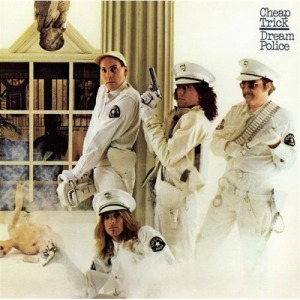
Why I Bought It: The first ten seconds of “Dream Police.” I must’ve seen this LP fifty times before “The dream police they live inside of my head” finally convinced me to drop a dollar on this Cheap Trick LP. Too bad “Surrender” and “I Want You to Want Me” aren’t on this record.
Verdict: I honestly can’t recall if I’d ever heard the entirety of “Dream Police” the song, but Dream Police the album is overblown in the biggest, most ’70s ways possible, whether it’s in synthesizer/string flourishes or epic track lengths. “Gonna Raise Hell” drags on for a seemingly interminable 9:20! The otherwise solid “Need Your Love” carries on for 7:20! I expected more of a power-pop feel to the record, but only “Dream Police,” “Voices,” and “Need Your Love” deliver. The other songs suffer from forced aggression (“This House Is Rockin’ [With Domestic Problems]”), too much soloing, and/or a lack of humor, which surprised me given “Surrender.” Hardly a surprise, then, that Dream Police is usually regarded as a drop-off in quality after their first three releases.
59. Terje Rypdal - Waves - ECM, 1978

Why I Bought It: I decided to take a chance on a completely unfamiliar ECM title and artist because it was a dollar and I’d been listening to a lot of Steve Reich’s ECM recordings at the time. I never thought, “This album is going to be just like Music for 18 Musicians,” nor did I have a strong sense of what it would sound like. Understandably, it took me a while to muster up the gumption to give this album a listen, but this excellent article from Perfect Sound Forever gave me a much better sense of what to expect from Waves and how it fit into Rypdal’s catalog.
Verdict: Trying to get a handle on Rypdal’s style, even with that article in mind, is a difficult process. Opener “Per Ulv” combines bop jazz and prog-rock guitar, sounding a bit like Santana joining a jazz trio onstage. Closer “Charisma” drops most of the jazz overtones, merging prog explorations and the atmospheric spaces of Tangerine Dream for the first song that sounds stereotypically Nordic. Most songs are dominated by trumpeter Palle Mikkelborg rather than guitarist/keyboardist Rypdal, which keeps things on the jazz side of the equation more often than not, but the compositions splay out like 1970s prog. The key word for Waves is “intriguing,” since I even as the record progressed I never got a handle on what to expect next.
60. Nitzer Ebb - That Total Age - Mute, 1987
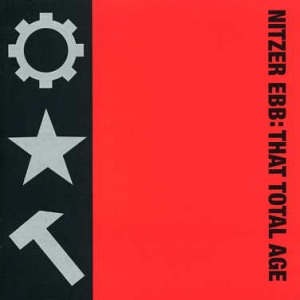
Why I Bought It: I knew that Nitzer Ebb fit into the late 1980s and early 1990s industrial scene, presumably from my bathroom reading sessions of The Trouser Press Guide to 1990s Rock. I’d gone through a brief and by no means comprehensive industrial phase my freshman year of high school prompted by Killing Joke’s Pandemonium and Nine Inch Nails’ Nothing Records, but my fondness for the genre expired before I did any major backwards exploration. When I stumbled across a number of 1980s industrial LPs in the dollar bin, including Nitzer Ebb, Skinny Puppy, and Einstürzende Neubauten, I snapped them all up, intending to fill the gaps in my 1994-1995 listening pile. I even had a decent idea of what to expect from each artist—electronic-heavy, somewhat pop industrial from Nitzer Ebb; abrasive and aggressive industrial from Skinny Puppy, and actual industrial sounds from Neubauten. I say actual since so much industrial ends up sounding like mean, heavy synth-rock. Nine Inch Nails’ Pretty Hate Machine broke in the mainstream because it was ostensibly mean, heavy synth-pop. It makes sense to start with Nitzer Ebb, since they’re closest to my industrial experience, but those Skinny Puppy and Einstürzende Neubauten LPs will come up later in RCR.
Verdict: That Total Age punishes the listener with a minimal combination of electronic beats, repeated phrases, and up-front bass for maximum damage. Wikipedia informs me of an industrial sub-genre called electronic body music, which isn’t far off from my initial take on songs like “Fitness to Purpose” and “Let Your Body Learn”: an S&M fetishist drill sergeant remaking Olivia Newton John’s “Physical.” A few of the songs diverge from the murderous repetition, paying off my pop expectations, but most chug along with endlessly repeated shouted slogans. At one point I thought “It’s like an entire record of extended 12” takes!” but only the aptly titled “Join the Chant” goes past six minutes. By the end of That Total Age I was exhausted from Douglas McCarthy’s barked vocals, so a single 12” EP might’ve been a better pick-up. Nitzer Ebb confirmed by expectations, sure, but they also underscored why Nine Inch Nails needed to incorporate more traditional synth-pop hooks and structures to cross over.
|
51. Thee Speaking Canaries - Life-Like Homes - Scat, 1998
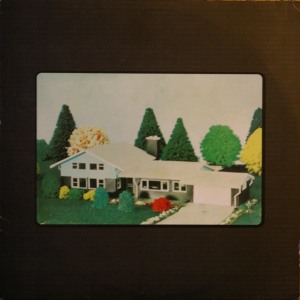
Why I Bought It: Even though I enjoy Don Caballero’s albums—Don Caballero II and What Burns Never Returns in particular—I’d never checked out Damon Che’s other group, Thee Speaking Canaries. Maybe I’d taken a thousand drummer jokes to heart, maybe I was concerned that Damon Che’s rather antagonistic stage demeanor (an understatement to say the least) wouldn’t translate well to his frontman role in this group, maybe those Van Halen comparisons (and covers!) scared me off, but no matter how many times I saw Songs for the Terrestrially Challenged in CD bins, I passed it up.
After seeing one of their LPs at RRRecords in Lowell, I told my friend Scott about it and he attested to Thee Speaking Canaries’ greatness. Shortly thereafter, he swung by Amoeba in San Francisco and picked up Songs for the Terrestrially Challenged and Life-Like Homes for me and mailed them out as a birthday gift. I don’t want to think of what I’d do with such close proximity to the heralded Amoeba—I’ve only been to San Francisco once and didn’t make it to the store—but I’d like to believe that I’d share the privilege as well as Scott does. More likely, I’d run up a ton of credit card debt and have to quit cold turkey.
Verdict: Given his propensity for dramatics—nailing down his drum kit, performing in his boxers, kicking out band members—it’s difficult to enjoy Damon Che’s music without appreciating the utmost gall with which he approaches it, and Life-Like Homes is no exception to this rule. Putting just three songs on a rock record requires some stones, especially when it requires splitting up the twenty-seven minutes of “The Last Side of Town” over side A and B. Proving that dealing with his gall isn’t unrewarded, the split even makes sense, with the song’s math-rock explorations and drifting noise segments coming on side A before blasting back to melodic, overdriven rock with part two on side B. It’s a bit of a shock to hear Damon Che yell “Woo!” before launching into a Van Halen–esque guitar solo on part two, but I’ll be damned if it doesn’t work.
It’s tempting to focus on how Che can switch between being a technically accomplished, powerhouse drummer in Don Caballero and a guitar-shredding frontman with surprisingly melodic vocals in Thee Speaking Canaries, to emphasize that he can pull off both roles, but that approach loses sight of what Life-Like Homes has to offer beyond Che’s signature gall. Between the enthusiastic arena/math hybrid of “The Last Side of Town (Completion),” the noisy bluster on the title track, and the mid-tempo melodies of “Song for Fucking Damon,” these songs hold up to multiple listens. (I already know this because I initially listened to side B first.) The combination of arena rock panache and math-rock precision is particularly compelling, making me wish that more ’90s math-oriented groups showed an extroverted side.
As much as I enjoy Life-Like Homes, I might have been better off ignoring Thee Speaking Canaries’ existence from a collector’s perspective. Che pressed both lo- and hi-fi versions of Songs for the Terrestrially Challenged (the former on Mind Cure, the latter on Scat), released the 1996 Opponents EP in an edition of 400 numbered copies (one is on eBay for $89 right now), and issued two versions of Get Out Alive, their 2004 album, a vinyl pressing of 39 minutes and a CD pressing of 76 minutes (which contains two songs from Life-Like Homes). Have I mentioned their long out-of-print 1992 debut The Joy of Wine? 500 copies are out there, somewhere. Good luck tracking all of this down.
2. Camper Van Beethoven - Our Beloved Revolutionary Sweetheart - Virgin, 1988

Why I Bought It: I knew of Camper Van Beethoven through David Lowery’s post-CVB group Cracker, whose bitter mid-1990s buzz bin hits “Low,” “Euro-Trash Girl” (I hate even thinking of that song), and “I Hate My Generation” were staples of 120 Minutes. Nothing had pushed me toward hearing them, however, until Floodwatchmusic listed II & III as his favorite record of 1986. Although I haven’t come across an LP copy of that record (update: yes, I have), I picked up their self-titled LP from Looney Tunes in Boston and then grabbed Our Beloved Revolutionary Sweetheart from either RRRecords or Mystery Train last fall.
Verdict: Even though this album marked the beginning of Camper Van Beethoven’s stay on Virgin, I was nevertheless surprised by the polish of Our Beloved Revolutionary Sweetheart, in both production values and performances. There are some hot guitar licks on this record! Once I accepted the major label sheen, I realized that the general aesthetic isn’t too far off from another eclectically styled 1980s group, the Mekons, especially given the fiddle. It’ll be interesting to see how much their self-titled LP differs from this album; even with their edges smoothed over, there’s still a good amount of spontaneity in a few of these songs, although none of that spontaneity could be misconstrued as ramshackle charm. (Terror Twilight it ain’t, thankfully.) It’s too bad the LP didn’t come with a lyrics sheet, since I recall hearing some choice lines in great tracks like “She Divines Water” and “Life Is Grand,” but the album as a whole was solid enough to merit another listen in the near future.
53. The Darling Buds - Shame on You - Native, 1989

Why I Bought It: I tend to pull things out of dollar bins that look like records I might be interested in, even if I’m completely unfamiliar with the band name. The Darling Buds’ Shame on You is a prime example of this tendency; I even have one of the twelve-inch singles that’s represented on this singles compilation thanks to a similar purchase. The colorful, ultra-saturated cover isn’t too far off from My Bloody Valentine’s album-art aesthetic, which makes sense given its release in the late 1980s, but there’s a more specific pop/shoegaze reference that came up once I put the needle down.
Verdict: The British Velocity Girl. The Darling Buds came first, of course, being inspired by the C86 cassette and scene, just like Velocity Girl (who took their name from Primal Scream’s contribution to the cassette), so the comparison is admittedly backwards, but from the opening strains of the title track I could think of no other point of reference. I remember buying Velocity Girl’s Simpatico from a cheap bin in high school and being overwhelmed by the chipper vocals and perky melodies. (I’m just not a power-pop fanatic.) I never got around to giving their debut, Copacetic, a chance, but I imagine it’s got fuzzier guitars and less defined hooks. As for the Darling Buds, they’re essentially a hybrid of C86-styled pop and the Go-Go’s. When the songs lean toward the former, like “That’s the Reason,” I can stomach it, but when they sound closer to latter, like “Valentine” and too many other songs, I begin to rethink my cover art policy for dollar bins.
54. Volcano Suns - All-Night Lotus Party - Homestead, 1986
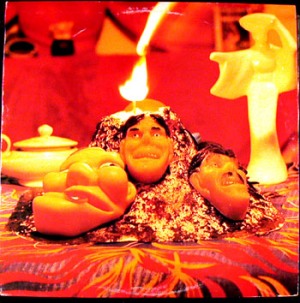
Why I Bought It: Along with a previously discussed Bullet Lavolta LP, I found two Volcano Suns LPs at a Champaign record sale a few years back. I wasn’t hugely into Mission of Burma at the time, but I probably knew that their drummer, Peter Prescott, had been a member of Volcano Suns following his initial stay in Burma. No excuse for waiting this long to listen to either of the records (I also have The Bright Orange Years on my shelf), but with their recent reissues on Merge, I’ve read a considerable amount about these records in the past few months. Plus, I see Prescott whenever I stop into the Cambridge location of Looney Tunes.
Verdict: Thanks to the recent surge of reviews, I had a fairly good idea of what to expect from All-Night Lotus Party: a more straightforward, less atmospheric version of Burma’s art-punk. Considering that I have to be in a certain mood to enjoy most of Burma’s catalog (with the exception of the early singles and most of The Obliterati, which is heavier on the pop hooks), a more approachable version of the group’s sound shouldn’t be viewed as a slight. All-Night Lotus Party is filled with abrasive, hard-edged art-punk—material that could (and probably did) inspire countless early 1990s Touch and Go groups—but a number of the songs lack memorable hooks amidst their steamrolling verses and shouted choruses. According to Pitchfork, The Bright Orange Years has more of these hooks, so I should give that album a spin and see how it compares, but “Engines” and “Village Idiot” stuck out on my first spin of All-Night Lotus Party. The album doesn’t lack energy or aggression, however, especially the album’s final salvo, “Bonus Hidden Mystery Track,” which one-ups any number of contemporary hardcore bands.
55. Funkadelic - One Nation Under a Groove - Warner, 1978

Why I Bought It: My introduction to George Clinton was the Animal House redux PCU, which I inevitably got sucked into whenever it came on HBO during high school. (Part of a larger trend of me getting sucked into mediocre-to-awful movies, but I digress.) The film’s huge party scene comes courtesy of George Clinton and Parliament-Funkadelic, who were directed to Jeremy Piven’s party-to-end-all-parties by Jon Favreau’s stoned assistance. Favreau doesn’t realize exactly whom he’s helped until partway into their truncated set (damn those deans!), at which point he freaks out and goes wild. A clichéd scene, but I give the filmmakers some credit: Imagine if it had been G. Love and Special Sauce or some other mid-90s party band.
I found this worn copy of One Nation Under a Groove in a dollar bin, missing its original bonus EP (the Heavy Maggot Disk) and coming with enough surface scratches to make me think twice, but I knew that I needed to buy it in case of any future party emergencies. You can’t count on encountering Clinton’s broken down tour bus whenever you’re throwing the biggest party in campus history.
(Or when you’re enjoying a nice Sunday afternoon with the AC on.)
Verdict: Funkadelic’s One Nation Under a Groove is a great instance of fulfilled expectations. Nothing threw me for a loop on the record, but I still found myself getting into the vast majority of the songs, enough to research other good Parliament and/or Funkadelic albums and add them to my eventual want list. Only the lower energy “Groovallegiance” left me wanting, but the title track, “Into You,” “Cholly (Funk Getting Ready to Roll!!),” and “Who Says a Funk Bank Can’t Play Rock?!” could have gone on much, much longer without any complaint. As I feared, the record’s in pretty bad shape, but the raunchy cartoon liner notes are in fine condition. I'll gladly buy a second copy of this album.
|
46. Herbie Hancock – “Autodrive” b/w “Chameleon” - CBS, 1983
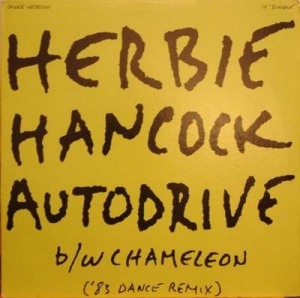
Why I Bought It: I’m primarily familiar with Herbie Hancock’s early 1970s albums Head Hunters and Thrust, which are eminently regarded, highly enjoyable jazz fusion albums with completely amazing album covers. This 12-inch single features one song from Hancock’s 1983 electro-jazz album Future Shock and a remix of “Chameleon” from Head Hunters, bridging the gap between these two eras. I’m wary of the concept of electro-jazz, especially given my discussion of dated 1980s production techniques in my last post about the Art of Noise, but it’s entirely possible that Hancock could avoid those stumbles.
Verdict: Herbie Hancock is not kidding with this electro-jazz concept. Between the sampled shouts, the constant laser gun blasts, and the tinny electronic drum kit, he’s loaded “Autodrive” with enough 1980s production clichés to make Wang Chung jealous. Sure, a grand piano makes an appearance to remind listeners of Hancock’s roots, but I can understand why “Rockit” from Future Shock was an MTV success; this song sounds like early 1980s MTV new wave. Hancock clearly has fun with these tropes, so even though the individual sounds have aged poorly, the song still has a playful, light air that almost encourages such aging. As for the flip side, I’ll have to consult the Head Hunters version to confirm this suspicion, but the remix of “Chameleon” doesn’t seem drastically different. The comparative subtlety of this track works well, since adding sampled shouts to bring an older piece up to date would have been comical instead of inspired, but it’s ultimately unlikely to steer me away from Head Hunters and toward Future Shock.
47. Unwound - New Plastic Ideas - Kill Rock Stars, 1994
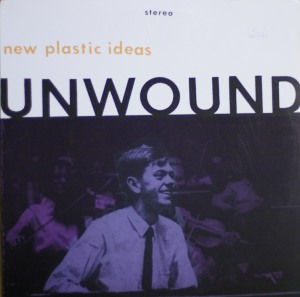
Why I Bought It: I first encountered Unwound’s brand of Sonic Youth–informed punk rock with either “Dragnalus” on the soundtrack to Half-Cocked or their 1996 LP Repetition, but I’ve primarily stuck with Repetition and the relative bookends of their output (barring their self-titled debut), 1993’s abrasive Fake Train and their 2001 swansong double album Leaves Turn Inside You. Unwound’s signature aggressive detachment, honed to a cool perfection on “Corpse Pose,” pulls me in and keeps me at bay. With few exceptions—the lovely “Lady Elect,” the aching “October All Over”—my relationship with Unwound is one of respect, not affection. But including their 1998 LP Challenge for a Civilized Society in a round of iPod Chicanery underscored their almost clinical level of effectiveness when they’re on, which in the case of Challenge is about fifty percent, which opened me up to grabbing one of their other albums.
Verdict: New Plastic Ideas strikes a welcome balance between the unhinged Fake Train and the machine-like efficiency of Repetition. Although the album lacks the polish of Repetition and the explorative nerve of Leaves Turn Inside You, there’s a refreshing consistency to these nine songs their later records sacrificed in the favor of ruthless experimentation. The restrained aggression of the lengthy instrumental “Abstraktions,” the mock-yearning of “Envelope,” and the dynamic peaks of “Arboretum” stand out, but each of the songs merits a mention. I need to listen to Leaves Turn Inside You again, but it’s entirely possible that New Plastic Ideals vaulted to the position of my favorite Unwound release with one listen.
48. Mekons - So Good It Hurts - Cooking Vinyl, 1988

Why I Bought It: When I purchased So Good It Hurts a year ago I only had vague notions of the Mekons’ alt-country, informed primarily by Touch & Go Records catalogs. After checking out the esteemed Fear & Whiskey and Mekons Rock ‘n’ Roll in my continuing efforts to expand my base of 1980s independent rock, it’s time to stop putting off listening to this album.
Verdict: My decision to hold off on listening to So Good It Hurts until I’d heard more typical Mekons records looks smart in retrospect. So Good It Hurts starts off auspiciously with the reggae-inflected “I’m Not Here (1967)” and incorporates more reggae, Cajun, and Celtic influences than expected. While it’s still a relatively solid album, such quasi-imperialist exploration deemphasizes the songwriting, leaving a few of the tracks to survive on egalitarian slogans. The title-citing “Fantastic Voyage” and the Sally Timms– sung “Dora” and “Heart of Stone” are the primary highlights, with the latter song sounding like a revitalized standard. So Good It Hurts could be a grower, but for now I’d like to focus on the Mekons’ alt-country efforts.
49. Count Basie - Basie Land - Verve, 1963

Why I Bought It: It’s a jazz record from the early 1960s released by Verve, I figured my wife, whose jazz preferences usually run closer to Oscar Peterson and Milt Jackson, would enjoy it, and it cost me all of $1.05. Naturally, I choose to listen to it when my wife is out of town.
Verdict: As someone who’s primarily delved into bop and fusion, Count Basie’s enthusiastic brand of swing jazz is a significant change of pace. The title track opens the LP with a big band–¬level of energy and “a cookin’ solo by tenorman Frank Foster,” but I prefer the slower pacing of the three tracks that follow it. “Instant Blues” is an apt title for the final song on side A. Most of side B returns to the pace of “Basie Land.” Basie Land is a nice diversion, but I doubt that big band/swing jazz is likely to gain a formidable presence in my record collection.
50. Gang of Four - Songs of the Free - Warner, 1982

Why I Bought It: When I finally bought Gang of Four’s classic Entertainment! I also picked up their next two albums, Solid Gold and Songs of the Free, not anticipating that their debut would refuse to budge from my turntable. From “Ether” to “Anthrax,” Entertainment!’s combination of minimal, razor-wire guitar phrases, funk- and dub-inspired bass lines, and Jon King’s remarkably catchy Marxist critique of British culture qualifies it with Wire’s Chairs Missing and Mission of Burma’s Vs. for my favorite post-punk LPs. (Entertainment! also dismantled my appreciation for recent groups like Q and Not U and Bloc Party that completely ape its dance-punk edicts.) As a cohesive distillation of their aims and sound, Entertainment! almost discourages a follow-up. Although a great record on its own accord, Solid Gold understandably can’t match its predecessor, suffering from an overly monochromatic palette. “What We All Want,” “Cheeseburger,” and “Outside the Trains Don’t Run on Time” are near equals of classics like “Return the Gift” and “5.45,” but the album lacks sustained brilliance. The prospect of Gang of Four’s slow descent into dance-punk with the emphasis heavy on the dance on Songs of the Free and Hard concerns me, but I’ve let the blurred screen capture on the cover of their third LP stare at me long enough.
Verdict: With original bassist Dave Allen departing for Shriekback, Gang of Four loses some of its rhythmic ingenuity. Replacement Sara Lee is capable, but lacks the signature touches that Allen brought to the first two LPs. Her background vocals are a bigger concern—their presence on “Call Me Up” and the single “I Love a Man in Uniform” may increase the group’s commercial appeal, but take away from the bite of King’s vocals and start the LP on a weak note. Thankfully, “We Live as We Dream, Alone,” “It’s Not Enough,” and “Life! It’s a Shame” close side A with a better combination of this new appeal and their old edge and “I Will Be a Good Boy” and “The History of the World” follow suit on side B. Yet the final two songs, “Muscle for Brains” and the near ballad “Of the Instant,” can’t keep up. (Typing out all of the album’s song titles is an amusing primer for their black-humored Marxism.)
Gang of Four’s nadir arrived with Hard—an album I won’t allow myself to purchase, even as my morbid curiosity grows—when drummer Hugo Burnham left and was replaced by a drum machine. Yet Songs of the Free sows the seeds for Hard’s treason. “I Love a Man in Uniform” is too sarcastic to be a pure sell-out single—“The girls they love to see you shoot”—but its pre-banning success encouraged the group to follow that blueprint, not the reenergized post-punk of “We Live as We Dream, Alone.” Songs of the Free takes one important step forward by losing the dry production of Solid Gold, but takes two steps backwards with its pop tropes and weaker bass lines.
|
41. The Art of Noise - (Who’s Afraid of?) The Art of Noise! - Island, 1984
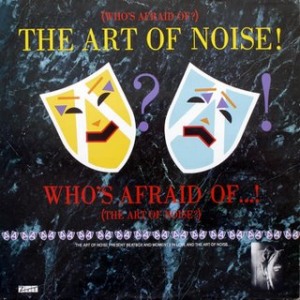
Why I Bought It: I came across the Art of Noise’s first two full-lengths in the dollar bin and, barring any particular knowledge of their catalog, opted to buy both of them rather than purchase only the lesser album. Typically I can pull enough information from the album sleeves to determine which album to grab, but the Art of Noise tries their damnedest to dodge specifics. My only prior knowledge about the band was that Anne Dudley collaborated with Killing Joke singer Jaz Coleman on the 1990 world music album Songs from the Victorious City, but despite my Killing Joke fandom, I do not own that release.
Verdict: With one prominent exception, (Who’s Afraid of?) The Art of Noise! suffers from the technological stamp of its era. Whereas early hip-hop can overcome reliance on rudimentary sampler techniques on the strength of the rapping, central placement of samplers and sequencers only highlights the Art of Noise’s compositional and melodic limitations. Not that AON is alone in this quandary—early Pop Will Eat Itself sounds just as dated, for example—but songs like “Beat Box (Diversion One)” and “Close (to the Edit)” depend on their production techniques sounding innovative to qualify as avant-garde experimentation. (At the very least, they do not feature Max Headroom.) “Close (to the Edit)” features an infuriatingly familiar sample that kept just out of memory until consulting Wikipedia; its stabbing sample was pulled from Yes’s “Owner of a Lonely Heart,” which AON member Trevor Horn produced. Anne Dudley’s fragmented vocals were later sampled for the Prodigy’s “Firestarter,” furthering this bizarre lineage. The samples featured on the other songs are harder to identify, but sound just as worn out twenty-four years later.
“Moments of Love” is the prominent exception to this rule. Presaging the late night grooves of DJ Shadow’s Endtroducing, the ten-minute highlight of the album tones down the jittery samples and trite melodies and focuses on supplementing its solid beat with tasteful keyboards and piano samples. Whereas a future generation of electronic artists could conceivably be inspired by songs like “Beat Box (Diversion One)” and “Close (to the Edit)” without actually sounding like them, the comparative restraint of “Moments of Love” allows it to act as both a structural guide and a sonic template for its progeny. The overall constitution of (Who’s Afraid of?) The Art of Noise! hardly encourages me to fast-track In Visible Silence in the RCR queue, but “Moments of Love” justify the two dollar expenditure on the albums.
42. Various Artists - Magic Eye Singles: Blue - Magic Eye, 1996
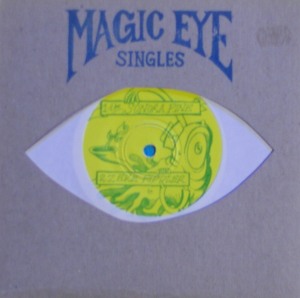
Why I Bought It: I have one other entry in the Magic Eye singles series, the aptly titled Gold (the titles are based on the vinyl color of the first pressing), which features Sonora Pine violinist Samara Lubelski, Team Xiaoping (Soo Young Park and William Shin of Seam), and Yesteryear. I bought that one a long, long time ago and can’t remember a damn thing about any of the tracks. This volume features the Sonora Pine, Zeke Fiddler, New Radiant Storm King, and Nord Express, so I grabbed it to hear the Sonora Pine song and to be able to say that I own something by New Radiant Storm King. The first single, which sadly I do not have, includes an exclusive June of 44 song named “1000 Paper Cranes.”
An added bonus, this single includes a photocopied postcard from David Berman of the Silver Jews. Responding to Magic Eye’s inquiry of his band’s availability for the series, Berman writes, “Thanks for asking but I think we’re monogamous with Drag City. Sure, we look at other labels on the street, every guy does, but we don’t sleep around. Good luck getting started.”
Verdict: Magic Eye states that their goal for the series was to “present unreleased songs that are different from those a band usually creates.” I read this tagline after listening to the Sonora Pine’s contribution, which features only Tara Jane O’Neil and Sean Meadows on guitar and the NYFD on sirens. This short bit of formless guitar squalor sounds nothing like either of the Sonora Pine’s albums, so they succeeded with the approach even if they failed to create an enjoyable song. The remaining three tracks are low-key attempts at stripped-down indie rock, with New Radiant Storm King taking an acoustic approach that saps their music of its energy. In a split-single context, I usually expect to gain a sense of what a band actually sounds like, so these four subpar tracks hardly justify subverting that proven approach.
43. Flying Nuns – “Disco Dancing Queen” b/w “Carousel of Freaks” - Summerville, 1992
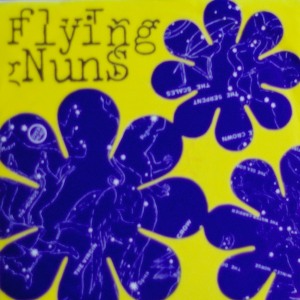
Why I Bought It: In a surprising coincidence, I listened to the Flying Nuns’ Pilot EP on my way up to Mystery Train Records in Gloucester today only to discover one of their early singles in a bin of mid-1990s indie rock seven-inches. I’d even thought about how little I’d listened to “Carousel of Freaks” (120 Minutes where are you?) since it falls on the less-played side B of the excellent Pilot EP, Flying Nuns’ only Matador release (they were dropped after the infusion of support from Capitol Records), and voila, it’s the flipside of this single. I’d never seen another non-Pilot release from the Flying Nuns before, although I should track down their 1998 self-titled EP and their 2002 full-length Everything’s Impossible Now These Days given my fondness for their catchy and meaty post-punk.
Verdict: These two songs feature a poppier side of Flying Nuns, with higher register vocals and less force from the rhythm section. “Disco Dancing Queen” has a predictable lightness given its title and the Galaxie 500-citing “Carousel of Freaks” fits with this mood better than the urgent “Submarine” or “Frank” would have. Now I just need to track down their later releases.
44. To Rococo Rot + D - “Smaller Listening” b/w “Numbers in Love” – Soul Static Sound, 2000
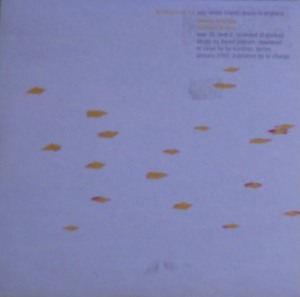
Why I Bought It: The graceful melody of “Die Dinge des Lebens” from To Rococo Rot’s 1999 full-length The Amateur View skips through my head every few months, sometimes inspired by its usage as the background for Björk’s “It’s in Our Hands” single. Yet I’ve never picked up any of their other material, despite seeing their collaboration with I-Sound (Music Is a Hungry Ghost) in used CD bins across the country.
Verdict: Whoops. Credit with Soul Static Sound abstract electronic artist D with the direction (or lack thereof) for these two songs, since these whirring, anti-melodic tracks couldn’t sound less like The Amateur View. Typically I’m embarrassed when I can’t tell the proper speed for a single, but these songs gave me no instrumental clues and aren’t interesting enough to merit concern. After flipping between 33 rpm and 45 rpm on both songs, I settled on the former speed since it annoyed me less. “Numbers in Love” is slightly better than “Smaller Listening,” but I can’t imagine pulling this one out of my singles box any time soon.
45. The C. S. Angels - Chasing Shadows - Island, 1986
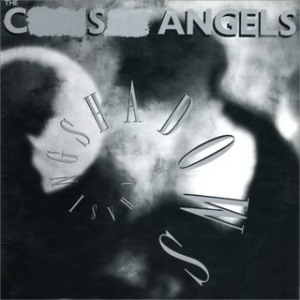
Why I Bought It: Silkworm’s cover of “Our Secret” led to my purchase of It’s History, a semi-legal reissue box set of the Comsat Angels’ Waiting for a Miracle, Sleep No More, and Fiction. Those three albums should be your starting point for the group, particularly the haunting post-punk of Sleep No More (which I finally tracked down on LP a few months ago), but former Silkworm member Joel R. L. Phelps’ cover of “Lost Continent” on Blackbird made me wonder about the group’s mid ’80s synth-pop phase. Phelps’ utmost sincerity and musical stoicism help his version of “Lost Continent” transcend its potentially cheesy lyrical content (“I’m looking for the same thing as you / The lost continent of love”), but tracking down the original on Audiogalaxy years ago only served to increase my appreciation of the cover. I couldn’t find the rest of Chasing Shadows online and stopped looking years ago after a picture disc for “Will You Stay Tonight” from 1983’s Land tempered my enthusiasm. Finding Chasing Shadows in the understock of Record Exchange in Salem, MA renewed my curiosity, so I snapped it up. After all, I own Killing Joke’s synth-driven albums—even the almost universally loathed Outside the Gate—so taking a chance on Chasing Shadows didn’t seem too preposterous.
Verdict: As it turns out, the Comsat Angels’ would-be sell-out synth-pop album is 1985’s 7 Day Weekend, given the inclusion of “I’m Falling” on the soundtrack to the Val Kilmer popcorn epic Real Genius. Chasing Shadows followed that record with a number of key changes—the group was forced to shorten their name in the United States to the C. S. Angels by a lawsuit from the Communications Satellite Corporation, dropped from Jive Records following a disappointing push to pop stardom with Land and 7 Day Weekend, and snapped up by Island Records at the behest of fan and snappy dresser Robert Palmer.
Yes, that Robert Palmer. He’s the album’s “executive producer” and contributes backing vocals for “You’ll Never Know.” Game over, right?
Not quite. Chasing Shadows lacks urgency and energy, but its dour moodiness does recall the pallor of their early post-punk records. The keyboards are minimal—hell, almost everything is minimal—and Robert Palmer’s guest vocal is barely noticeable. Whereas “Lost Continent” sounded out of place with regard to their earlier work, its teetering optimism is downright necessary on this album. Stephen Fellows seems worn down from the group’s troubles, singing “It’s a slave with a whip and it will beat you / Chasing shadows, running ragged, going round and round” on the title track, “I can’t wait for pennies from above” on “You’ll Never Know,” and “When every word fans the flames / All you can do is pray for rain” on “Pray for Rain.” Most of the eight songs linger past the five-minute mark and this nearly relentless melancholy grows tiresome by album’s end. Without the nervous twitches of early singles like “Independence Day” (although this is the Land version) or “Eye of the Lens” or the abbreviated hooks of their foray into synth-pop to vary the pace, the Comsat Angels get too bogged down in their atmosphere for their own good.
Chasing Shadows may not qualify as a true return to form, but it’s intriguing enough to justify the purchase. “The Thought that Counts,” “Lost Continent,” “Flying Dreams,” and “Pray for Rain” are individually solid blends of post-punk and moody new wave, but the band’s troubles fundamentally altered their constitution. The cover of the US version of Chasing Shadows has the “om” and the “at” in the band name scratched away, which seems apt given the missing elements of their sound.
|
36. Prefab Sprout - Two Wheels Good - Epic, 1985
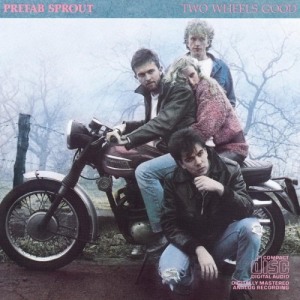
Why I Bought It: I saw Two Wheels Good (more widely known by its British name, Steve McQueen) in the dollar bin at Stereo Jack’s Records in Cambridge and vaguely recalled the band name, but I wasn’t buying enough to hit their $10 minimum purchase level for credit cards and only had enough cash to buy the soundtrack to This Is Spinal Tap and Rex’s self-titled debut. When I later learned that it’s a highly acclaimed recipient of a recent 2CD reissue, I made a mental note to venture back over there with a dollar and change in hand to pick it up. (Naturally, I ended up finding the Cocteau Twins’ Blue Bell Knoll and had to charge the purchase.)
Verdict: Due largely to Thomas Dolby’s mid-’80s production values, Two Wheels Good sounds more adult-contemporary pop than anticipated. The songs themselves, particularly closer “When the Angels,” occasionally transcend this sheen, but I found myself losing focus on what singer/songwriter Paddy McAloon is crooning about. Glancing over the lyrics on a Prefab Sprout fan site makes me want to give it another shot, but ironically—given the vinyl fetishism inherent to this project—it also makes me want to hear the acoustic bonus disc from the CD reissue.
37. Roxy Music - Stranded - ATCO, 1974
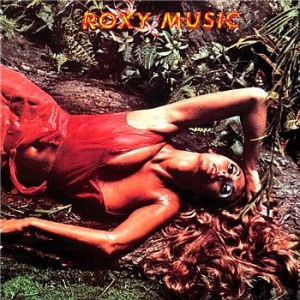
Why I Bought It: With all apologies to Stranded’s Playboy Playmate cover model Marilyn Cole, Brian Eno’s early solo work acted as my gateway to his previous band’s catalog, not Brian Ferry’s then-girlfriend. I included For Your Pleasure and Roxy Music in the last round of iPod Chicanery and the strength of those LPs prompted me to pick up Stranded at Mystery Train in Gloucester a few months back.
Verdict: Stranded was the first post-Eno Roxy Music LP, but it’s not lacking inspiration. The up-tempo single “Street Life,” the dramatic, multilingual “A Song for Europe,” and the dynamic “Mother of Pearl” are the clear highlights, but side B is consistently great. There’s a bit of drag on side A after “Street Life”—none of the other songs on that side match its energy—but I imagine that my pacing concerns will evaporate with a few more listens. Bryan Ferry’s croon carries a few of these songs, especially “A Song for Europe,” which whets my appetite for his 1985 solo LP Boys and Girls which awaits in the queue.
38. Stars of the Lid - Avec Laudenum - Kranky, 1999

Why I Bought It: After jumping in headfirst with last year’s excellent And Their Refinement of the Decline, I’ve been working my way backwards through Stars of the Lid’s catalog of ambient classical compositions. 2001’s 3LP epic The Tired Sounds of Stars of the Lid has lingered near my turntable since their astounding performance at the Museum of Fine Arts back in May, but I’ve had my eyes on the vinyl pressing of Avec Laudenum since Record Store Day. The closing of Newbury Comics’ Government Center location prompted a 50% off coupon for vinyl, which I was all too happy to use on Avec Laudenum. (There will soon be a new location in Quincy Market, one that hopefully rivals the Harvard Square and Newbury Street stores in focus and stock.) It will take longer for me to track down SOTL’s earlier LPs, since they’re no longer in print and fetching a premium on eBay, but nothing I’ve heard so far has discouraged me from the pursuit.
Verdict: Avec Laudenum sounds stripped-down in comparison to the two triple LPs that followed it, relying on arcing drones and drifting guitar chords in lieu of strings and brass. Yet this simplicity never seems lacking. Wiltzie and McBride utilize this sonic palette with the utmost subtlety on “Dust Breeding (1.316)+” and “I Will Surround You,” making it nearly impossible to extract particular elements from the flowing warmth of their drone symphonies. In the three-part “The Atomium,” the increasing presence of the guitars signals the concluding swell of the third section and then quickly vanishes, as if the ascent never occurred. When focusing on Stars of the Lid’s reverse artistic progression, it’s tempting to view Avec Laudenum’s soothing minimalism as an appetizer for grander ambience of Tired Sound of Stars of the Lid and And Their Refinement of the Decline. But Avec Laudenum, a five-song LP that comes across as two distinct, ponderous movements, deserves a better fate than to be considered a warm-up lap.
39. Pat Metheny - 80/81 - ECM, 1981
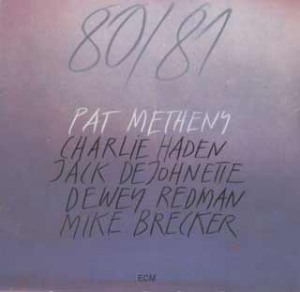
Why I Bought It: Pat Metheny’s involvement in Steve Reich’s Electric Counterpoint and Ornette Coleman’s Song X prodded me to pick up a dollar copy of 80/81, although I left behind a good percentage of his late 1970s and early 1980s releases. While I can sign off on a Metheny album with prominent involvement from Charlie Haden and Jack DeJohnette, my hesitation over his folk-jazz fusion compositions won’t go away until I actually hear one of his records, not a collaboration with a respected peer. 80/81 doesn’t quite qualify as that record, but at least most of these are his compositions.
Verdict: The first minute of “Two Folk Songs” was rather unnerving, as Metheny’s acoustic guitar drives a mid-tempo folk-jazz hybrid into disturbingly light terrain. As the song progressed, however, Jack DeJohnette pummeled away my doubts. His forceful drumming keeps side A from losing focus and pushes Metheny’s acoustic guitar to the background, at least until Metheny gains enough steam to compete. Sides B and C switch to more traditional, less folk-influenced post-bop, including a version of Ornette Coleman’s “Turnaround” from his 1959 LP Tomorrow Is the Question. Tenor saxophonists Dewey Redman and Mike Brecker steal Metheny’s thunder on the lengthy “Open,” spiraling their dueling leads upward in a cacophonous riot as Metheny’s ascending notes only serve as a distraction. Side D returns to the folk-jazz blend of side A, but DeJohnette isn’t nearly as thunderous on these comparatively laid-back tracks. “Every Day (I Thank You)” and “Goin’ Ahead” give Metheny’s layered guitar tracks center stage, but lack the energy of the previous three sides.
80/81 essentially succeeds in spite of Metheny, since the contributing players give far more spirited performances. It’s not difficult to see his approach for this record—bring in acclaimed jazz musicians, do one LP of folk-jazz fusion to demonstrate his particular take on the genre, do one LP of post-bop to lure in the purists and prove his mettle in a more traditional context. Yet 80/81 doesn’t sell me on Metheny’s own compositions when they’re highlighted in the mix (side D), so an album I largely enjoy ultimately does nothing to encourage me to check out Metheny’s personal discography.
40. Bullet Lavolta - The Gift - Taang!, 1989
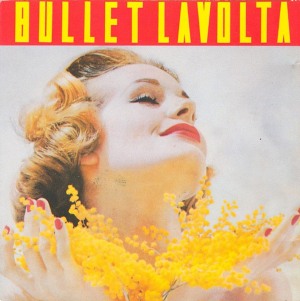
Why I Bought It: Future Chavez guitarist and Joy Ride screenwriter Clay Tarver started out in the Boston-based Bullet Lavolta, so I was more than willing to grab their debut LP for a dollar. Grabbing it, sure; listening to it, no. The Gift has been lurking in my record collection since I grabbed it (along with a few Volcano Suns LPs and a few less noteworthy albums) at a record fair in Champaign.
Verdict: Whereas Chavez’s riff-driven indie rock had hints of traditional hard rock but never succumbed to the genre’s vices, Bullet Lavolta are neck deep in hard rock bluster. Whether it’s because this material hasn’t aged well, it lacks the visceral jolt of the live setting, or my taste for throttling hard rock doesn’t meet the dosage, The Gift simply doesn’t hit squarely. Tarver and Ken Chambers attempt to find the midpoint between the breakneck pace of 1980s hardcore and the righteous shredding of early Van Halen on tracks like “X Fire,” “Sneer,” “The Gift,” and “Trapdoor,” but never sound as inspired as their source material. Vocalist Yukki Gipe wails and sneers on most tracks, but on “Birth of Death” tries to appropriate the guttural incantations of death metal with curious results, not exactly the intended effect. A reviewer on Amazon writes that if Bullet Lavolta existed in 1994 instead of 1989, they would have been a huge act in the midst of the alternative revolution, but I’ll take that prompt a different way. If Bullet Lavolta existed in 1994 instead of 1989, the weaker tendencies in their sound—the hard rock bluster, in short—would have been antithetical to the times and they likely would have been a more appealing band. Thankfully, Chavez’s mid 1990s existence saves me from worrying too much about Clay Tarver’s squandered potential.
|
31. Slayer - Reign in Blood - Def Jam, 1986

Why I Bought It: Finding a copy of Reign in Blood with the shrink wrap intact (originally $8.29 at Good Vibrations; I paid less) forced me to finally confront one of metal’s classics. I say confront because I turned away from metal videos when they came on MTV during my sheltered youth in the 1980s. Being fond of Phil Collins-era Genesis and Men at Work made even hair metal sound like the product of Jordan, Minnesota. By the time any of my close friends got into metal it was high school and the band was Metallica, so the impact was doubly limited. I’d already gotten into indie rock and hearing James Hetfield’s thin wail on Kill ’em All in Chris Williams’ Chevy Cavalier was more likely to make me laugh than to turn me to the dark side.
Verdict: Slayer does not fuck around. The first line of the record is “Auschwitz, the meaning of pain.” The music is equally unrelenting, a brutal combination of heavy riffs, lightning-fast solos, pummeling bass drums, and Tom Araya’s remarkably clear vocals—no guttural emanations here. If you’re going to sing about topics that will offend Tipper Gore, why not have her understand what you’re singing about, right? The band’s secret weapon is the half-speed breakdown, which makes the forthcoming solos in “Necrophobic” seem even faster. These ten songs are remarkably lean, infusing the technical precision of speed metal with the economy of American hardcore.
The lyrical content is extreme to say the least—“Angel of Death” is about concentration camps and Nazi physician Josef Mengele—meaning that I’m unlikely to ever memorize the lyrics to “Raining Blood” and shout along in the car. Yet it’s hard not to think of Silkworm’s “There’s a Party in Warsaw Tonight,” a decidedly un-metal song in which Andy Cohen sneers “There will be peace / On mounds of teeth / I’m no fool I’m gonna slave all the people to me.” While Slayer’s Reign in Blood may be one of the few pure metal records in my collection (I can’t in good conscience count Isis and Nadja LPs, since those initially appealed to me for their non-metal [read: post-rock] characteristics), it’s not comprised of completely unfamiliar elements, a point that should finally overturn any lingering hesitance towards approaching the genre.
32. Dis- / Panel Donor - Split Single - Lombardi, 1995

Why I Bought It: While the past few years of canon-exploring has diminished its place in my active listening pile, mid-’90s Midwestern indie rock still holds prime real estate in my tastes. Hum was my gateway drug to Castor, Love Cup, Shiner, Zoom, Dis-, and a handful of other key groups that utilized the heavy guitars of grunge in tricky, non-grunge fashions. Dis- transitioned nicely from the distorted weight of their early records (The Small Fry Sessions 1 & 2 and M 386.D57 1994, with its library catalog–inspired title that screws up my record collection spreadsheet, are worth grabbing if you ever see them) to the solid combination of dark humor and math-rock on their 1996 swan song The Historically Troubled Third Album. While I was able to track down Dis-’s CDs and single in Champaign since they were released on Poster Children’s 12 Inch Records imprint, Panel Donor eluded my grasp until late in my Midwestern stay, at which point finding their self-titled debut seemed more exciting as a trophy of my tastes than an actual album to obsess over. I’ve finally listened to most of it in the current incarnation of iPod Chicanery and it’s been a comfort food in the midst of a considerable amount of unfamiliar cuisine.
All of this leads me to how I actually found the Dis- / Panel Donor split single. I finally made it up to Mystery Train in Gloucester, MA on Memorial Day and I was astonished to find a good amount of Midwestern indie rock vinyl during my mad dash through their inventory. In addition to this single, I grabbed Table’s first seven-inch (a math-rock trio whose bassist Warren Fischer [whose hilarious entry on Wikipedia deserves a mention] now resides in the electro-clash outfit Fischerspooner), a Boys Life / Giants Chair split single, Boys Life’s first LP, and Panel Donor’s Surprise Bath LP among some other non-Midwestern sundries. Upon seeing that Sonic Bubblegum, the label for that Panel Donor album and Dis-’s Historically Troubled CD, was based in Brighton, MA, I realized a possible origin for these seemingly displaced records. I’ll have to return to Mystery Train with more time and money on hand and fully scour both vinyl and CD bins for similar Midwestern oddities.
Verdict: Dis- contributes an early version of “Suddenly Everyone Is a Smoker,” the first song of theirs I heard after its inclusion on a My Pal God / Actionboy / Ohio Gold sampler CD featuring C-Clamp, Hurl, and Dianogah among others. It’s fairly similar to the version on The Historically Troubled Third Album, pushing the drums and distorted guitar up in Steve Albini’s mix. Dis- records featured a rotating cast of drummers (Matt Morgan, Peter Pollack, Chris Cosgrove respectively), so seeing Chris Manfrin credited for this performance wasn’t too much of a surprise. Manfrin also appears on Seam’s final two records and Dis- offshoot Sixto’s self-titled disc, and currently in the post-Silkworm group Bottomless Pit.
Panel Donor’s “L.T. Weightman” features former Zoom guitarist Jeremy Sidener, who joined up after that self-titled debut I mentioned earlier. After a shouted, aggressive verse, the guitars and distorted bass move through some downbeat, melodic passages before returning full force for a powerful ending. It’s easy to remember why I love this stuff. When I either get a USB turntable or a stereo input for my laptop, I’ll rip this single for your listening pleasure, but until then, keep digging through those dusty seven-inch bins.
33. Hüsker Dü - Warehouse: Songs and Stories - Warner, 1987

Why I Bought It: Considering my fondness for most of Sugar’s catalog and selections from Bob Mould’s solo work, checking out Hüsker Dü was long overdue. After finally listening to Zen Arcade and New Day Rising, I nearly bought the former on Record Store Day, but figured I’d have plenty of shots to grab that record since SST vinyl has been plentiful at Newbury Comics. Finding a used copy of Warehouse at Record Exchange in Salem, MA, resulted in a slight impulse buy. Should Warehouse be the first Hüsker Dü LP in my collection? I doubt it. But coming from the pop end of the Bob Mould spectrum suggests that Hüsker Dü’s finale might appeal more to me than the group’s die-hard fans.
Verdict: Warehouse is a double LP, but the reminders of Zen Arcade don’t extend to this album’s concept or diversity. The routine of switching between Bob Mould songs and Grant Hart songs can’t keep Warehouse from dragging. Virtually all of the record’s twenty tracks are competent entries into 1980s college rock; some hint at their past shredding, some slow down to let Mould’s guitar jangle ring out, but it’s hard to consider those songs curveballs. Well, I was surprised by the cheesy leads on Hart’s “Too Much Spice”; perhaps Mould included them out of spite.
While I’m disappointed by the whole of the record, the highlights redeem the purchase. I typically prefer Mould’s compositions to Hart’s, but the latter’s “You Can Live at Home” closes out the record on a high note. “I can be fine, I can be free / I can be beautiful without you torturing me / Walk, walk away, keep on walking away / Go / You can live at home now / You can live at home now” is a scathing way to conclude their final record and the extended exit is accompanied by Mould’s most inspired guitar squall. Mould’s “These Important Years,” “Ice Cold Ice,” and “Could You Be the One?” nearly match “You Can Live at Home” with their strong melodies and forward propulsion. If the album was cut down to a single LP, I’d sing its praises and lament how long it took for me to track down a great entry into Bob Mould’s history of melodic guitar rock. But unfortunately Mould and Hart (I’m leaving Greg Norton and his awesome mustache out of this one) chose bulk over quality control.
34. Panel Donor - Surprise Bath - Sonic Bubblegum, 1997

Why I Bought It: As I previously mentioned, finding a horde of Midwestern indie rock at Mystery Train Records in Gloucester, MA, was too good to pass up. I was fortunate to see the back of this LP, since the front doesn’t include the band name and I was unaware that this album (or 1996’s Lobedom and Global) even existed. I should clearly pay more attention to Built on a Weak Spot for his thorough posts on Panel Donor and other Midwestern favorites—his mp3s are still up if you’d like to sample any of Panel Donor’s three albums. On a side note, the album cover looks like a manipulation of a still frame of Matthew Barney’s Cremaster Cycle. Weird.
Verdict: The addition of Zoom guitarist Jeremy Sidener helps Panel Donor sound, well, more like Zoom, which isn’t a bad thing in my book. Nothing here rocks quite as hard as their song from the split single with Dis-; instead, the best songs linger in mid-tempos, exchanging woozy guitar riffs and melancholic vocals with the aplomb of the best low-key Polvo and Zoom songs. “Surprise Bath” and “Kid Throws in for Pillowing” pull this trick off marvelously, making their dynamic shifts seem almost invisible. Surprise Bath lacks some of the vocal hooks that push Zoom and Castor above many of their Midwestern brethren, but there’s a depth to this record that begs for more listens.
35. Nick Lowe - Pure Pop for Now People - Columbia, 1978

Why I Bought It: Friend and occasional collaborator Mark T. R. Donohue / Western Homes mentioned seeing a Nick Lowe concert in a recent LiveJournal post, explaining that Lowe is “one of the chief inspirations of all my ambitions as a songwriter… if Western Homes music is Christianity, then Nick Lowe is the father, Elvis Costello is the son, and Alex Chilton is the Holy Spirit.” While I’ll never equal his fondness for Elvis Costello (believe me, few can), I’m more than willing to check out Lowe based on Mark’s recommendation. This record was originally called Jesus of Cool in the UK and featured a different album cover; the title change is understandable, but why they removed the photo of Lowe with a dual-necked bass/guitar is beyond me.
Verdict: Situating Lowe between Elvis Costello and Big Star makes a considerable amount of sense—aside from the scathing “Music for Money,” he sticks closer to power pop than the edgy new wave found on Costello’s early records, perhaps separating his own music from his role as the in-house producer for Stiff Records’ early punk and new wave records. Lowe instead chooses to reference ’50s rock, ’60s pop, and ’70s disco in his power pop/pub rock crossovers. Since Lowe had already issued an EP called Bowi in response to the 1977 release of Low, “(I Love the Sound of) Breaking Glass” is a likely reference to that album’s “Breaking Glass,” stealing a bit of its Berlin shiver for a righteously melodic single. “No Reason” and the tongue-in-cheek (Bay City) “Rollers Show” also stand out as inspired examples of Lowe’s songwriting, but the tidy running time of Pure Pop for Now People doesn’t allow for any filler. He may show a bit of discomfort in the various rock guises featured on the cover, but the biggest strength of Pure Pop is Lowe’s ability to incorporate those guises with subtlety and wit instead of making the album sound like a mix tape of his tastes.
|
26. Orchestral Manoeuvres in the Dark - Dazzle Ships - Virgin, 1983

Why I Bought It: Pure whim. I knew OMD played synth-pop but couldn’t remember if I’d actually heard any of it (in retrospect I’m familiar with “If You Leave” from the Pretty in Pink soundtrack, but that song would be more likely to discourage me from checking out their other work), so my main reason for buying Dazzle Ships is Factory Records’ house designer Peter Saville’s name on the inner liner. The sleeve is vaguely similar to New Order’s Power, Corruption & Lies in its use of die-cut circles, but the slanting blocks of color remind me more of the cover for Wire’s 154. As an added bonus, there is a record inside the sleeve.
Verdict: In his All Music Guide review of Dazzle Ships, Ned Raggett calls the album “a Kid A of its time that never received a comparative level of contemporary attention and appreciation.” I did not see this one coming, so excuse the Radiohead aside to follow. While my fondness for Radiohead pales in comparison with that of the vast majority of critics and many of my peers—I tend to respect rather than enjoy their work—I understand what they tried to accomplish with Kid A. By appropriating the songwriting techniques of electronic artists, Radiohead aimed to write new forms of rock songs from the ground up, thereby avoiding the tired genre conventions of their peers. While those songs differ both structurally and sonically from their guitar-rock past (and present), the group’s unrelenting thematic emphasis on alienation in the modern condition brings continuity to their catalog (at the sake of greater emotional resonance in my view, but I’ll leave that alone for now). The album succeeds as both a statement record and a courageous step out into the abyss for a popular act, so I hardly take comparisons to its aims lightly.
Hearing Dazzle Ships for the first time with those expectations in mind was a curious experience, since I’m not familiar enough with their previous work to sense a huge shift in approach. There are three types of songs on this album: sound experiments, traditional synth-pop, and attempts to splice elements from the former into the latter. I’ll deal with the sound experiments first, since those are the most explicit attempts to push OMD’s aesthetic forward. “Radio Prague” is a sampled fanfare and an effective introduction for “Genetic Engineering,” but it’s not memorable in its own regard. “Dazzle Ships (Parts II, III & IV)” veers from industrial lurching to gothic bursts, but ultimately exists more of a moody bookend or a jarring introduction for “The Romance of the Telescope” than an actual song. “Time Zones” layers recorded time announcements from various languages, but for what purpose? These songs add atmosphere to the record, but so did the radio clips on Kraftwerk’s Radio-Active, so it’s hardly a novel approach for the genre.
“Genetic Engineering” does an excellent job of internalizing the found sound—more specifically, found technological sound—of “Radio Prague” for a more traditional synth-pop song, something neither “ABC Auto-Industry” nor “This Is Helena” can quite accomplish. Those songs try to replace OMD’s typically dramatic vocals with robotic recitations, reminding Raggett of “Fitter Happier” from OK Computer, but neither song finds the proper balance between organic emotion and technological precision. The beginning of “Radio Waves” suggests another sound experiment, but its upbeat chorus and hand claps completely reverse these expectations.
Andy McCluskey’s vocals tend to pull me out of the album’s more traditional songs, particularly the wildly emotive “International,” tampering with the atmosphere created by the more experimental tracks Yet “Of All the Things We’ve Made” closes the album on a high note, accompanying its reserved, reticent vocals with a muted guitar jangle and echoing piano notes. Whereas much of Dazzle Ships relies on surface-oriented advances to amaze the listener, the subtlety of “Of All the Things We’ve Made” suggests that it’s not the aesthetic surroundings of OMD’s music that needed tweaking, but some of their most fundamental components. Dazzle Ships certainly tries hard to invigorate their synth-pop approach with an experimental edge, but too often I hear the constituent parts instead of a wholly synthesized product of these urges. Raggett’s comparison may be somewhat accurate in terms of intent, but it’s a disservice to OMD when it comes to the final product.
27. Meat Puppets - Out My Way EP - SST, 1986

Why I Bought It: I remember taping their 1990s buzz bin entry “Backwater” from the radio for the bus ride to school, but something tells me that I would’ve been put off at the time by the cow punk of their earlier SST albums. After seeing a few Meat Puppets LPs on Pitchfork’s Best of the ’80s list, I decided to finally check them out, picking up used copies of Meat Puppets, Up on the Sun, and Out My Way.
Verdict: Out My Way is a solid stopgap EP, but not an essential release like its predecessor Up on the Sun. Side A has three fleshed-out rock songs with scaled-down country influences and amped-up fretwork, making some sense out of Mark Prindle’s consistent comparison of the Meat Puppets to ZZ Top. Side B, however, doesn’t fare quite as well. After the par-for-the-course “Not Swimming Ground,” “Mountain Line” is saved only by an intriguing instrumental outro and the high-energy cover of “Good Golly Miss Molly” couldn’t end fast enough. It’s worth grabbing for a few bucks, but none of the melodies have stuck in my head like the title track to Up on the Sun.
As an added bonus, Out My Way came with a 1986 SST catalog. Ever since Touch & Go sold me on Slint with “So far ahead of their time they’re standing behind you,” I’ve held a special affinity for record label and mail order catalogs. Unfortunately, SST avoids both band comparisons and witty descriptions, opting instead for song titles, release year, and underground standing as their go-to hooks. I am rather impressed by the presence of a custom Black Flag skateboard—$40 for the deck only, $100 fully equipped.
28. Pat Metheny / Ornette Coleman - Song X -Geffen, 1986
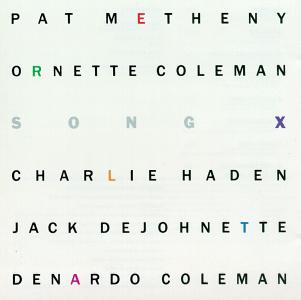
Why I Bought It: While distantly removed from Song X’s release in 1986, Ornette Coleman’s The Shape of Jazz to Come and This Is Our Music are two of my favorite jazz records, so I’m willing to check out most LPs adorned with Coleman’s name. As for Pat Metheny, I enjoy his performance on Steve Reich’s Electric Counterpoint, but I haven’t yet listened to any of his original performances, something that this project will reconcile with the double LP 80/81.
Verdict: I expected Song X to sound considerably more alien, given its oblique title, release in the mid-1980s, and prominent involvement from Pat Metheny, but those expectations were clearly way, way off the mark. While the collaboration between free-jazz pioneer Coleman and crossover guitarist Metheny may have been intended to bring Coleman into mainstream 1980s music, the actual content avoids making any radical departures. The other contributors—Charlie Haden on bass, Jack DeJohnette on drums, and Denardo Coleman on drums/percussion—help ground the proceedings in the vein of The Shape of Jazz to Come and Free Jazz. Metheny takes a backseat role to Coleman, who takes most of the songwriting credits and resides in the prime real estate of the mix. That isn’t to say that its release in the mid ’80s doesn’t color the sound, since Denardo Coleman’s electronic drum treatments and Metheny’s guitar synths do make appearances, but it’s remarkable how little those elements stick out as dated.
I do wonder how a true 50/50 collaboration might have worked out, since Metheny is clearly deferring to one of his inspirations. “Song X Duo” brings some space to the Coleman/Metheny dynamic and possesses a rare moment of a warmly ringing guitar chord. Whether this moment is merely an improvised resolve or a tantalizing suggestion of what might have been is debatable, but Song X shouldn’t be seen as a failed experiment because of Metheny’s deference. It’s a solid album that chooses cohesion over fresh earth, the subtle incorporation of a new player over a war for territory.
29. Faith No More - Introduce Yourself - Slash, 1987
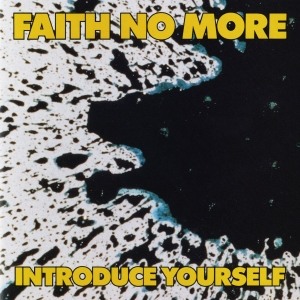
Why I Bought It: While I love Angel Dust and, to a lesser extent, King for a Day… Fool for a Lifetime, non-“Epic” tracks from The Real Thing tend to set off my cheese metal alarm. So aside from “We Care a Lot,” I’ve steadfastly avoided the Chuck Mosely era of Faith No More. Finding an LP of Introduce Yourself for less than five bucks finally convinced me to take a shot at their pre-Patton catalog.
Verdict: Introduce Yourself exceeds my admittedly low expectations by a fairly wide margin. Both sides are frontloaded with their best songs, leaving the clunkers (“Death March,” “Blood,” “Spirit”) to bring up the rear. Side A starts off with four solid tracks—album highlight “Faster Disco,” the melodic “Anne’s Song,” the energetic “Introduce Yourself,” and the rap metal prototype “Chinese Arithmetic”—before losing steam with the aimless banter preceding “Death March.” Similarly, side B is anchored by “We Care a Lot,” “R n’ R,” and “The Crab Song” before fading off. Jim Martin’s chunky riffs and Mike Bordin’s muscular drumming hold the record together, but it’s ultimately Chuck Mosely’s vocals that determine a given song’s worth. When Mosely tries to sing (see aforementioned clunkers), the solid instrumental mix beneath is wasted, but when he alternates between semi-rapped verses and shouted slogan choruses, his inability to carry a tune is irrelevant. Perhaps I should cut Mosely some slack in this situation, since Mike Patton’s stay in Faith No More exhibits a similar dichotomy (nasal whine vs. every other vocal strategy attempted), but even Patton’s nasal crooning doesn’t ruin songs quite like Mosely’s tuneless voice can. Still, with seven worthy songs, Introduce Yourself handily defeated my lingering reservations.
30. XTC - Mummer - Virgin, 1983
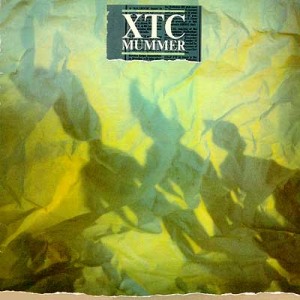
Why I Bought It: After J. Robbins compared Burning Airlines’s Mission: Control! to the antsy pop of early XTC, I picked up their singles collection Upsy Daisy Assortment and made little progress beyond “Making Plans for Nigel.” Hearing Drums and Wires and Black Sea—the guitar-centric albums to which Robbins likely referred—helped contextualize the cheery power pop of the singles collection. I would have preferred grabbing the highly praised English Settlement or Skylarking (although the latter has since been rectified), but dropping a dollar on an unheard XTC record in a beat-up sleeve seemed like a smart idea.
Verdict: Mummer lacks much of the exuberance that sold me on the power pop complements to their post-punk edge of Drums and Wires and Black Sea. The near-scat vocals in the Middle Eastern-aping “Beating of Hearts” start the album off with a bang and the energetic, scathing “Funk Pop a Roll” closes Mummer with that endlessly entertaining trick of writing a great pop song about the dangers of pop music (see also: Elvis Costello’s “Radio, Radio,” Pavement’s “Cut Your Hair,” Archers of Loaf’s “The Lowest Part Is Free,” Juno’s Rodeo Programmers”), but aside from the gloriously melodic “Love on a Farmboy’s Wages,” the lack of energy between these bookends is underwhelming. “Ladybird” is certainly pastoral, but I wouldn’t call it memorable. Several of the songs are nearly saved by great moments—the orchestral cacophony concluding “Great Fire,” the subdued melodies in the outro of “In Loving Memory of a Name,” the dark lyrical bent of “Human Alchemy”—but they still lack the internal consistency of XTC’s best tracks. It’s easy to understand why the songwriting on Mummer is muddled—it was the band’s first album after Andy Partridge’s nervous breakdown and consequent retirement from touring, drummer Terry Chambers left midway through the recording session—but I’m dismayed that two of its three best tracks already reside on Upsy Daisy Assortment.
|
21. Bruce Springsteen - Born to Run - CBS, 1975
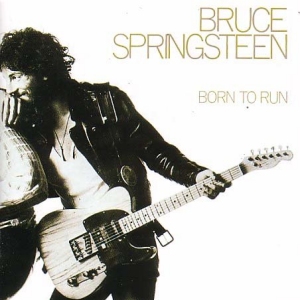
Why I Bought It: Whenever I flip through dollar bins, there are almost always records like Born to Run that pop up: critically acclaimed, audience-beloved staples of American culture and classic rock radio. While I’ve never sat down and listened to Born to Run—or any other non-Nebraska Springsteen LP—it’s essentially already part of my musical fabric, so I don’t feel the need to include it in my collection. I usually flip by such records, noting their existence but preferring to grab something less familiar, but occasionally I’ll cave to whatever populist impulses exist deep within my being and pick up one of them.
Verdict: Only three songs were instantly recognizable—“Thunder Road,”
Tenth Avenue Freeze-Out,” and “Born to Run”—but the remaining five are so endowed with the Boss’s signature sound that they could have all been massive radio hits. Each song is essentially a journey between known points, whether it’s the building fire (“Thunder Road”), the heart-tugging climax (“Born to Run”), the quiet eye of the storm (“She’s the One”), or the saxophone-enabled glory of introducing caution to the wind (“Jungleland”). It’s easy to forget that at one time these various points weren’t immediately familiar, that their effect was not a cycle of remembrance but of connection.
Unlike a number of LPs I’ve listened to in the last week, I never strained to appreciate when Springsteen and his band were doing, never questioned whether a given song fit within the whole, never wondered what other people saw in the album. Born to Run is a great record, but I already knew that. But just like I approached it, I don’t feel the sudden need to hear it or Springsteen’s other classic albums again in the near future. I’m certain I’ll listen to them at some point, maybe even building a fondness for Springsteen’s small-town-goes-big storytelling down the line, but right now I’m more concerned with records that may not be certified classics.
22. Depeche Mode - Black Celebration - Sire, 1986
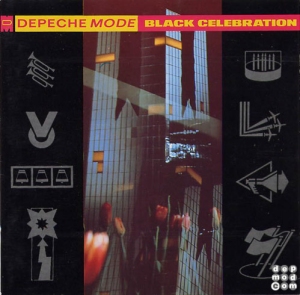
Why I Bought It: “Enjoy the Silence” and “Policy of Truth” may be on Violator (which I pulled, sans-case, from the free bin at Rhino Records in high school), but they’re good enough to merit grabbing a cheap copy of Black Celebration.
Black Celebration, particularly side A, is weighed down by a number of less-than-impressive tracks. When Dave Gahan croons over melodic synth lines on “Black Celebration,” “A Question of Time,” and “Stripped,” it’s hard to argue with the band’s formula. The same cannot be said about “Sometimes” or “A Question of Lust,” which cut back on the synthesizers and end up sounding more like a lecherous version of 1950s pop. Thanks, but no thanks. The stripped-down production of those songs also takes away from the power struggle between the dour nihilism of their gothic tendencies (“Black Celebration” starts “Let’s have a black celebration / Black celebration / Tonight / To celebrate the fact / That we’ve seen the back / Of another black day”; sigh) and their leering sexual proclivities, embodied so well in Gahan’s rich voice. While I like parts of Black Celebration enough to check out their other non-Violator albums if I see cheap copies, I get the feeling that Depeche Mode will always be a singles/highlights band to me.
23. Hz Roundtable - Birdbath EP - Intonated, 1997
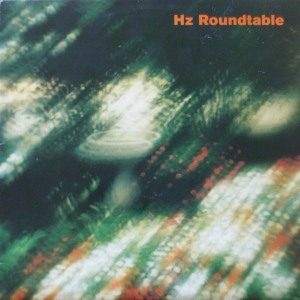
Why I Bought It: Either the Parasol catalog or the Reckless database informed me that Hz Roundtable had a connection to Midwestern indie rockers Zoom, so I snapped it up. Zoom/Hz Roundtable singer/guitarist Mark Henning is now in The National Trust, whose soul/funk hybrid reminds far more of Prince than, say, Panel Donor, but I’m willing to bet that Hz Roundtable is closer in spirit to his earlier work.
Verdict: …and I would theoretically collect on that bet. Hz Roundtable’s quirky indie rock seems like a logical offshoot of Zoom, albeit stripped of that band’s urgency and heft. With ten contributors across the six songs, Hz Roundtable is more of a collective than a highly structured band. The resulting combination of relaxed songwriting and stray instrumentation rarely helps Birdbath, however, since the songs have a tendency to drift without strong hooks to buoy them. Henning sings on the even tracks, but his voice lacks the gravity present on Zoom’s Helium Octipede. Similarly, Zoom’s distinctive guitar leads—“Balboa’s Cannon” was a mix tape staple for years—only come up on the closing track, “The Jersey Lily,” which features just Henning and Liz Bustamante. I’m disappointed that this EP doesn’t compare to Zoom’s self-titled debut or Helium Octipede, but at this point I’ve largely given up blind-buying questionable offshoots like this one.
24. Kraftwerk - Autobahn - Vertigo, 1974

Why I Bought It: I downloaded Trans-Europe Express for an earlier iteration of iPod Chicanery and, as typically happens, I wasn’t able to find a cheap copy of that record but instead two of their earlier albums, Autobahn and Radio-Activity, and one post-Express album, The Man-Machine. I blame my late-comer status on Kraftwerk/Neu!/Tangerine Dream on the fact that my high school German textbooks only used Falco and Die Toten Hosen as examples of the country’s music. I wonder if American-penned German textbooks herald Richard Marx and Bryan Adams as the primary delegates of our cultural output.
Verdict: While this listening experience—sitting in my living room and flipping between Stuck on You and The Hunt for Red October on mute—doesn’t quite compare to hearing “Europe Endless” for the first time on an Italian train last summer, Autobahn certainly expands my idea of Kraftwerk’s range. Whereas Trans-Europe Express is defined by its cold, machine-like precision, Autobahn, like its cheery cover, is far less stoic, branching out in several unexpected directions. The title track blends the gleeful (well, as gleeful as German electronic pioneers are going to get) refrain of “Wir fahr’n fahr’n fahr’n auf der Autobahn” with a shifting melodic and rhythmic backing for a 23-minute voyage. “Kometenmelodie 1” and “Mitternacht” pull away from the sunny demeanor of “Autobahn” for some atmospheric wanderings closer to Tangerine Dream’s quiet moments. “Kometenmelodie 2” counters this drama with brighter, more insistent melodies and “Morgenspaziergang” closes the album on a particularly whimsical note. Whereas I appreciate Trans-Europe Express for its singular focus (and appropriateness for the robo-boogie), the range of Autobahn is equally appealing.
25. Cocteau Twins - Tiny Dynamite / Echoes in a Shallow Bay - 4AD, 1985
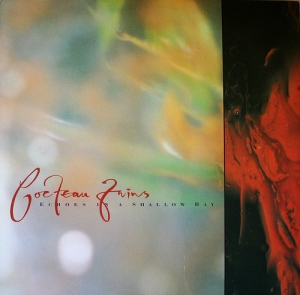
Why I Bought It: When I first listened to My Bloody Valentine’s Loveless after buying it blind around the age of seventeen, I thought, “This is the most rocking new age music I’ve ever heard!” Considering my record collection at the time consisted of indie rock, alternative rock, and the pop end of industrial, the glistening shoegaze of Loveless seemed overwhelmingly alien. I gradually checked out My Bloody Valentine’s contemporaries (Ride and Slowdive) and followers (M83, early Lassie Foundation, Ulrich Schnauss), but it wasn’t until the second round of iPod Chicanery that I finally heard one of MBV’s biggest influences. Perhaps some of the delay could due to my overall reticence in delving into 1980s indie, a reticence based largely on the presumably dated sonics and the era’s reliance on drum machines, but I have to wonder if the new age comment lingered in my memory banks. The direct lineage of Elizabeth Fraser’s glossolalic yodels to My Bloody Valentine’s blurred syllables almost prescribed a similar reaction the first time I heard Cocteau Twins. “I didn’t know Enya was in a proto-shoegaze dream pop band!”
All of this set-up takes away from my actual feelings on Cocteau Twins, based upon Treasure and Heaven or Las Vegas. Some songs (“Lorelei,” “Heaven or Las Vegas,” “I Wear Your Ring”) congeal the gossamer arrangements and Fraser’s cooing, nearly wordless* vocals with astonishing effect. Yet I rarely listen to more than five Cocteau Twins songs in a row before losing attention and moving on to something else. While I would have preferred finding either Treasure or Heaven or Las Vegas on vinyl, I’m admittedly excited about hearing their other work.
* It’s hard to explain how much amusement I get out of reading Cocteau Twins’ lyrics on SongMeanings and trying to match up the words with Fraser’s voice.
Verdict: According to Wikipedia, these two EPs were originally recorded together to test a new studio arrangement, not for popular consumption. The band decided that the material was good enough for release, so they dropped Tiny Dynamite and Echoes in a Shallow Bay just two weeks apart in November of 1984. Naturally, I get them paired together, so I essentially hear Tiny Dynamite and Echoes in a Shallow Bay as a single-album follow-up to Treasure, precisely what they wanted to avoid. Sorry, Cocteau Twins.
I can understand the band’s hesitance over designating this material as a full-length; while most of the songs are fine enough, few, if any, reach the heights of the finest material on Treasure. “Pink Orange Red” and “Pale Clouded White” are the most memorable tracks, pulling away from the drama of Treasure for a more relaxed style. The instrumental “Ribbed and Veined” seems particularly influential with regard to Slowdive, but going without Fraser’s vocals prevents me from remembering a note of the music. I’ll give the band credit for knowing exactly where this material stands: it’s certainly good enough for background or mood music, but it’s not making any statements about the band’s development. An interesting note: all of the song titles (and lyrics?) deal with Lepidoptera (the order of butterflies and moths), so if Vladimir Nabokov had still been alive in 1984, he probably would have appreciated the nod to his favorite hobby.
|
|

